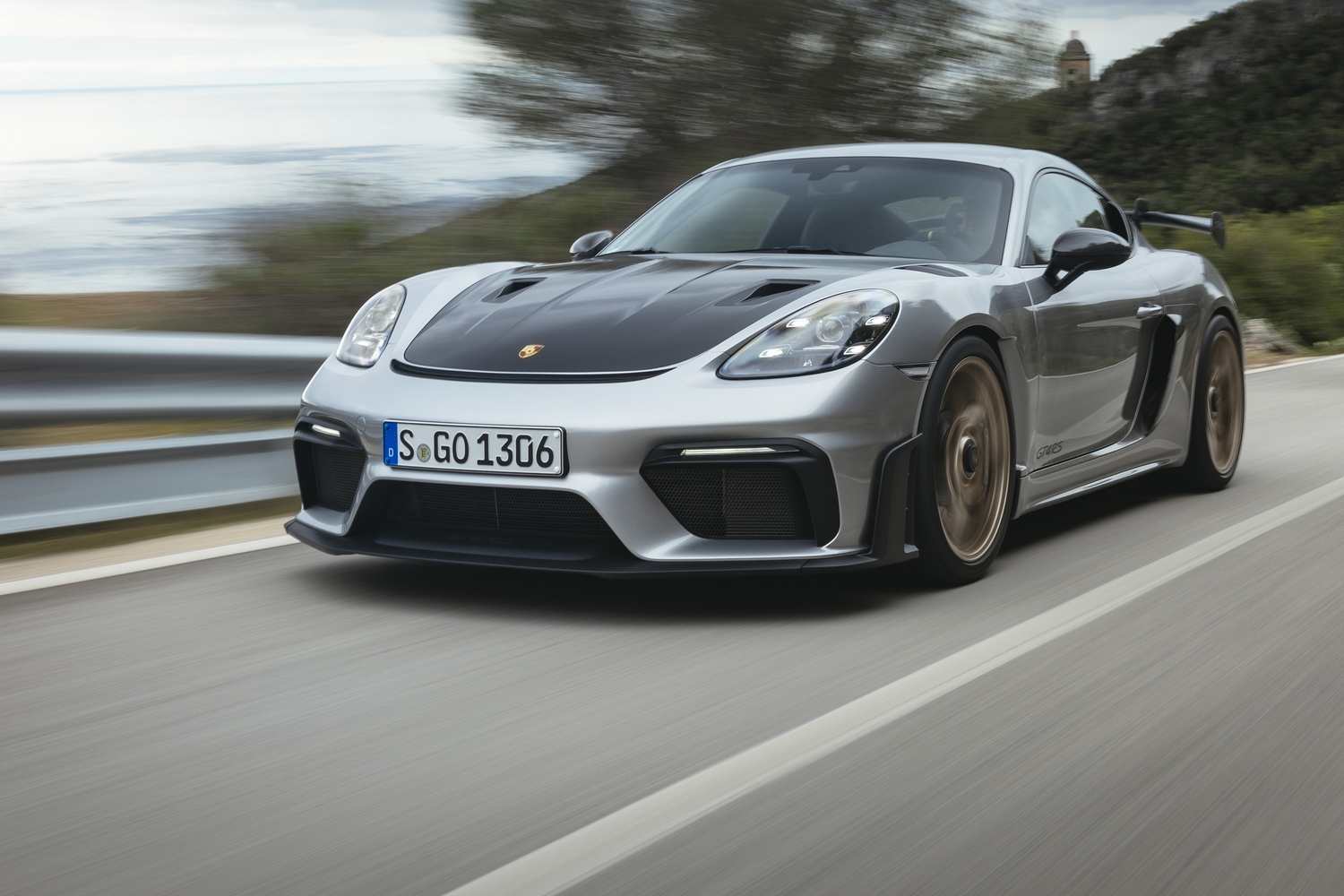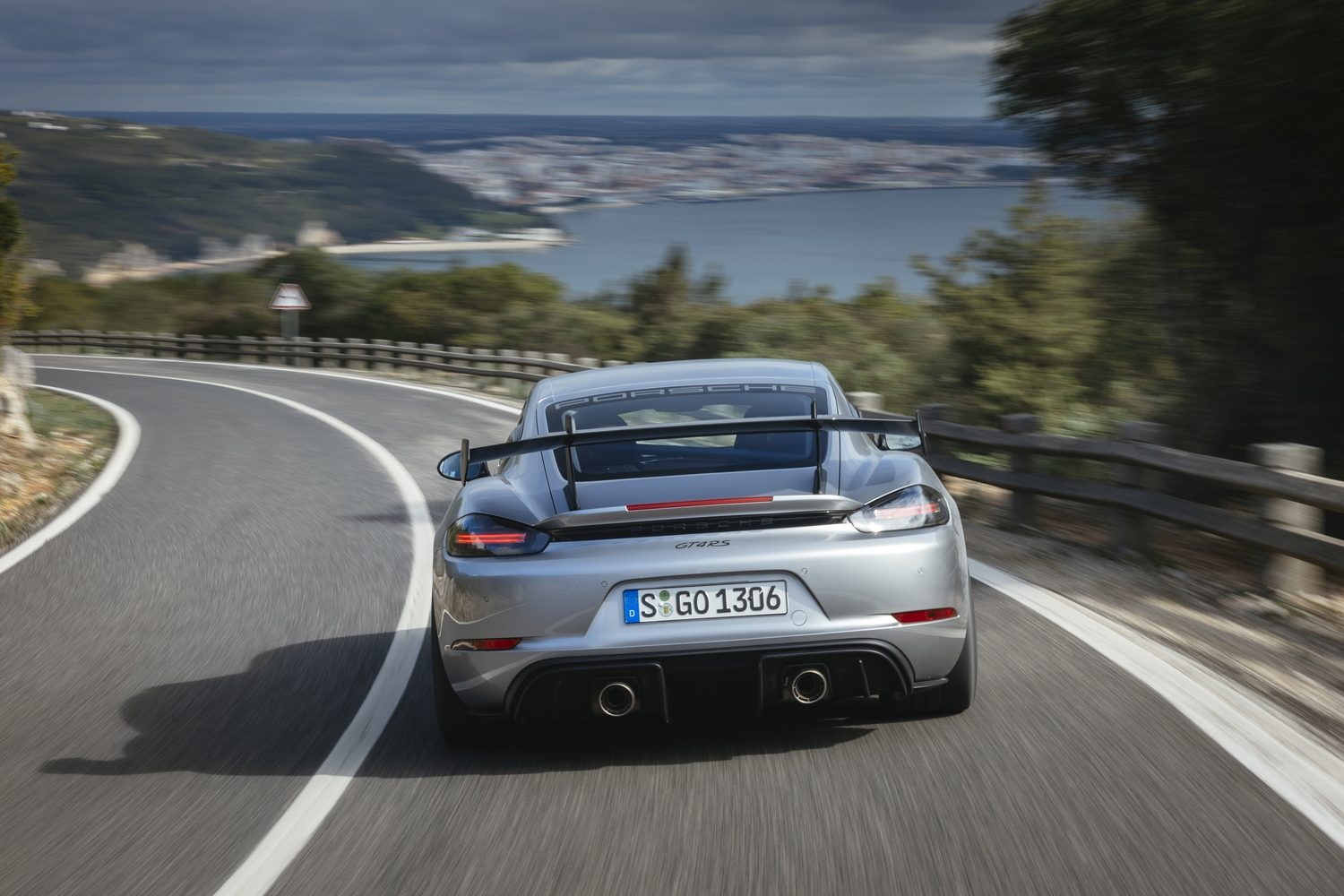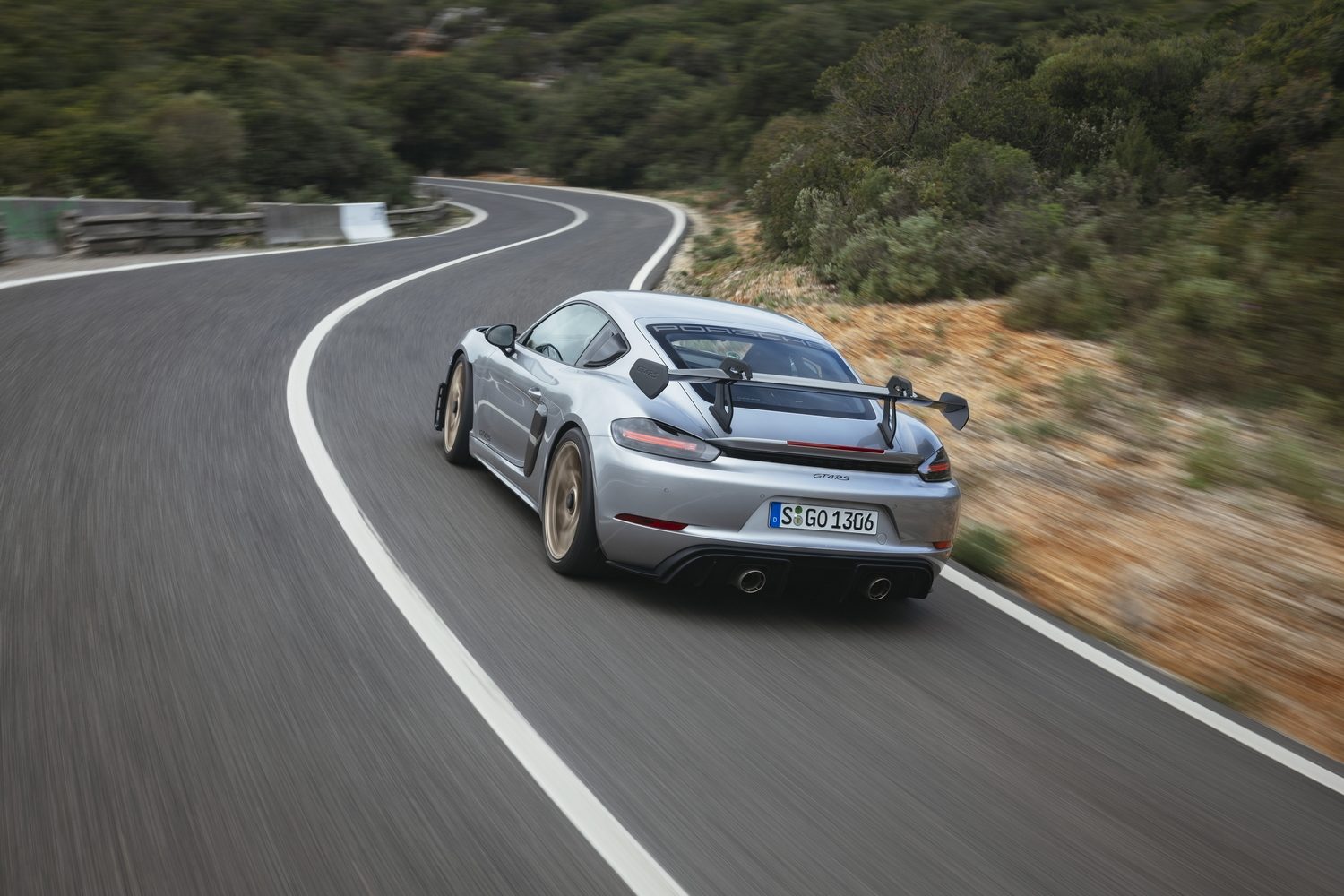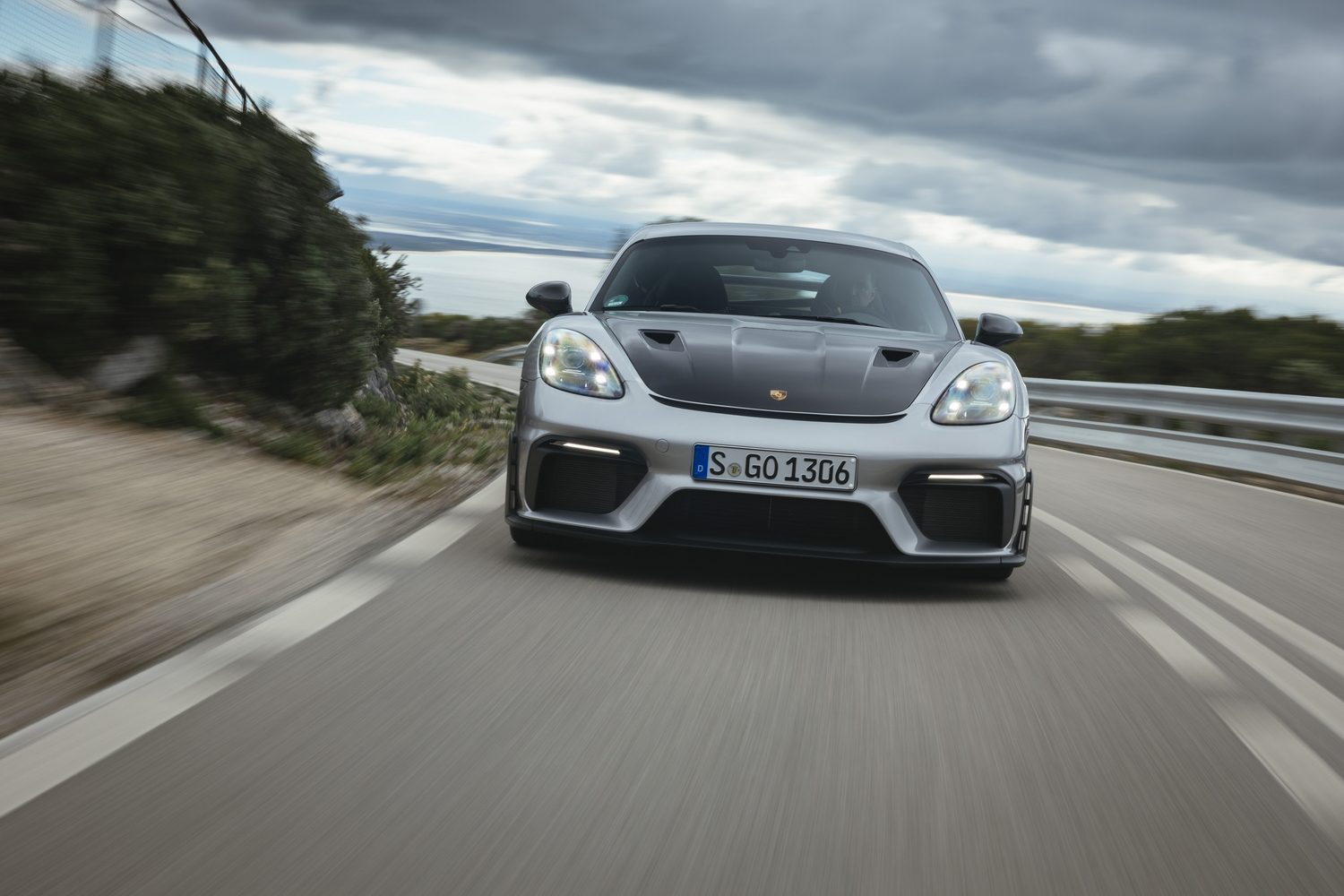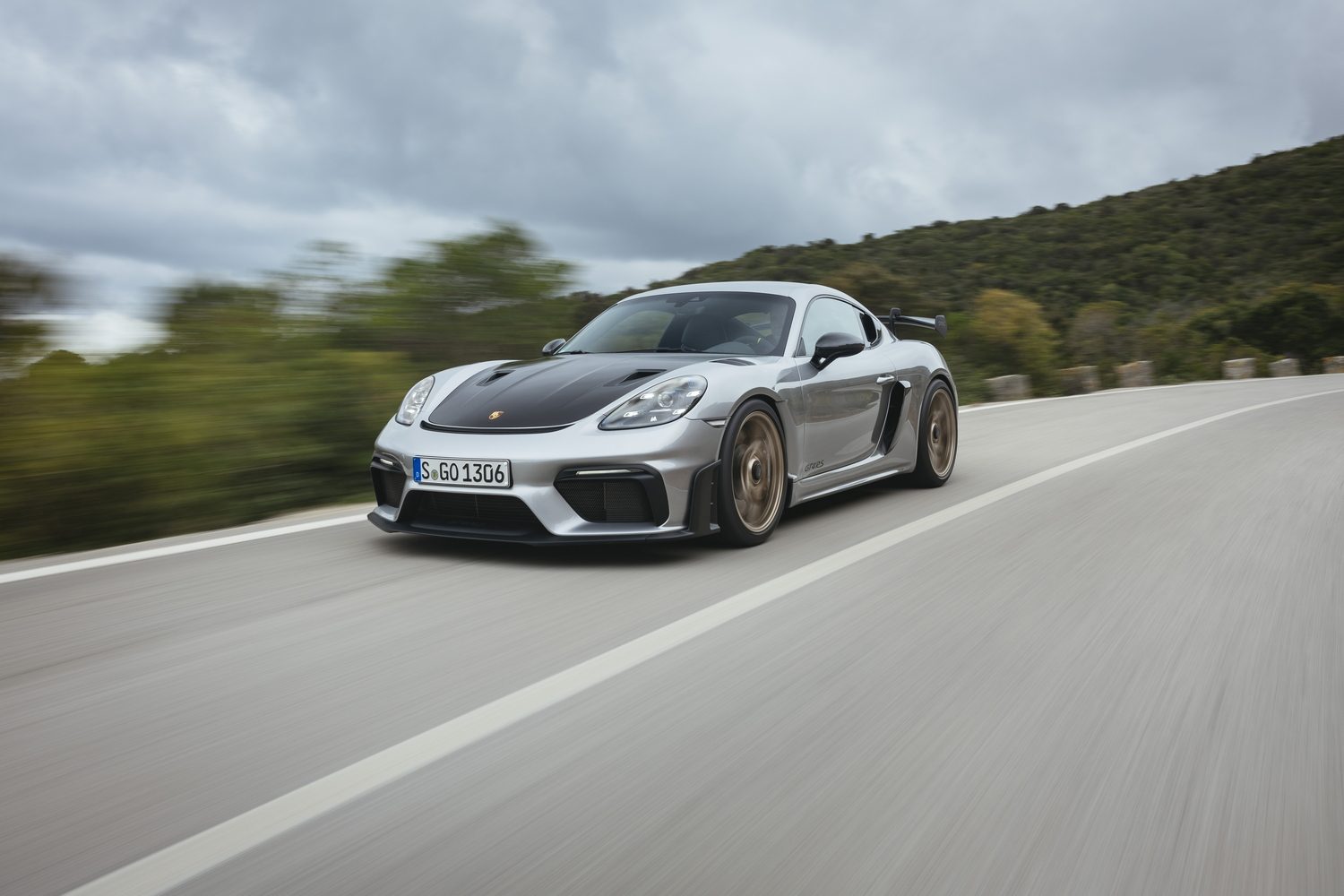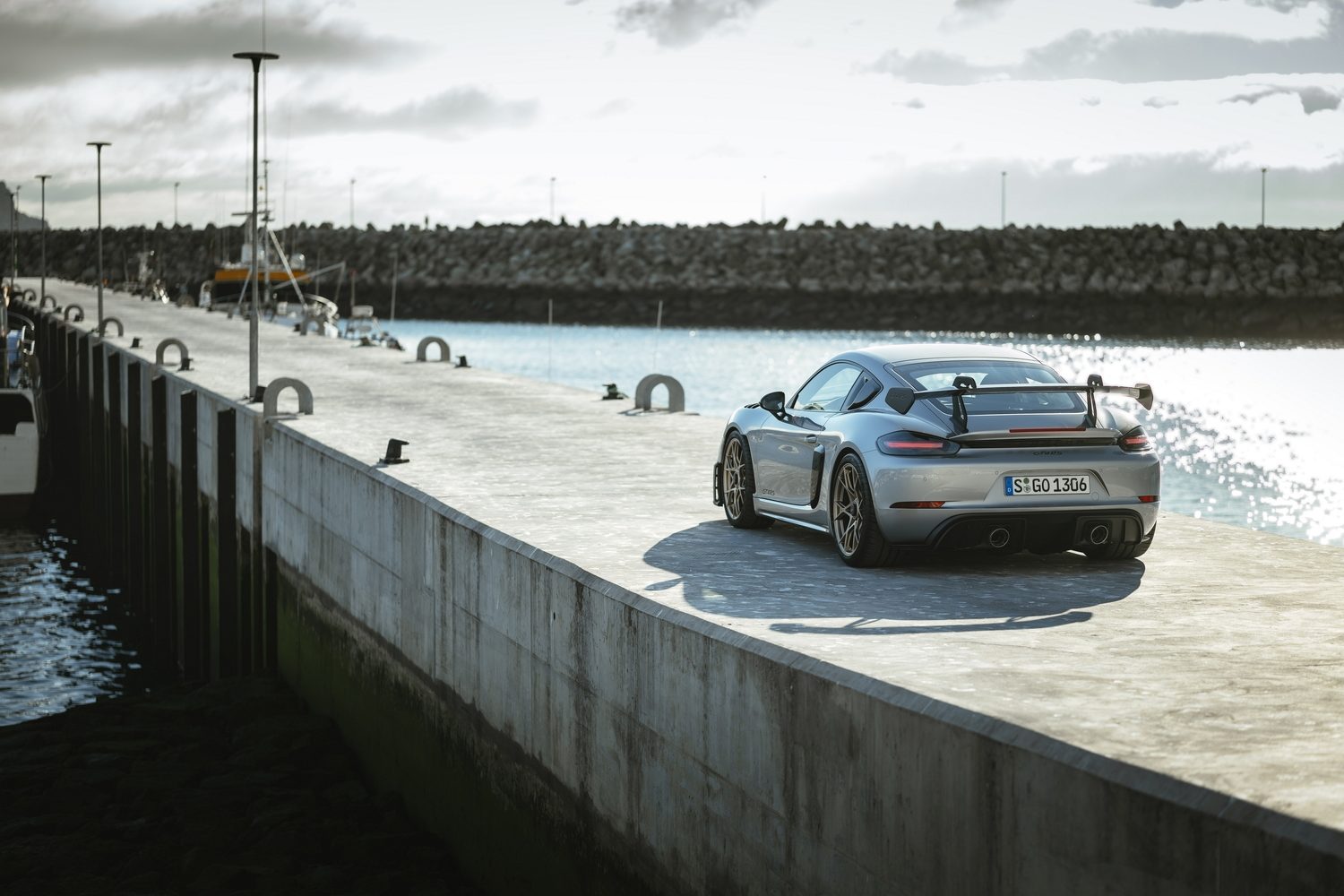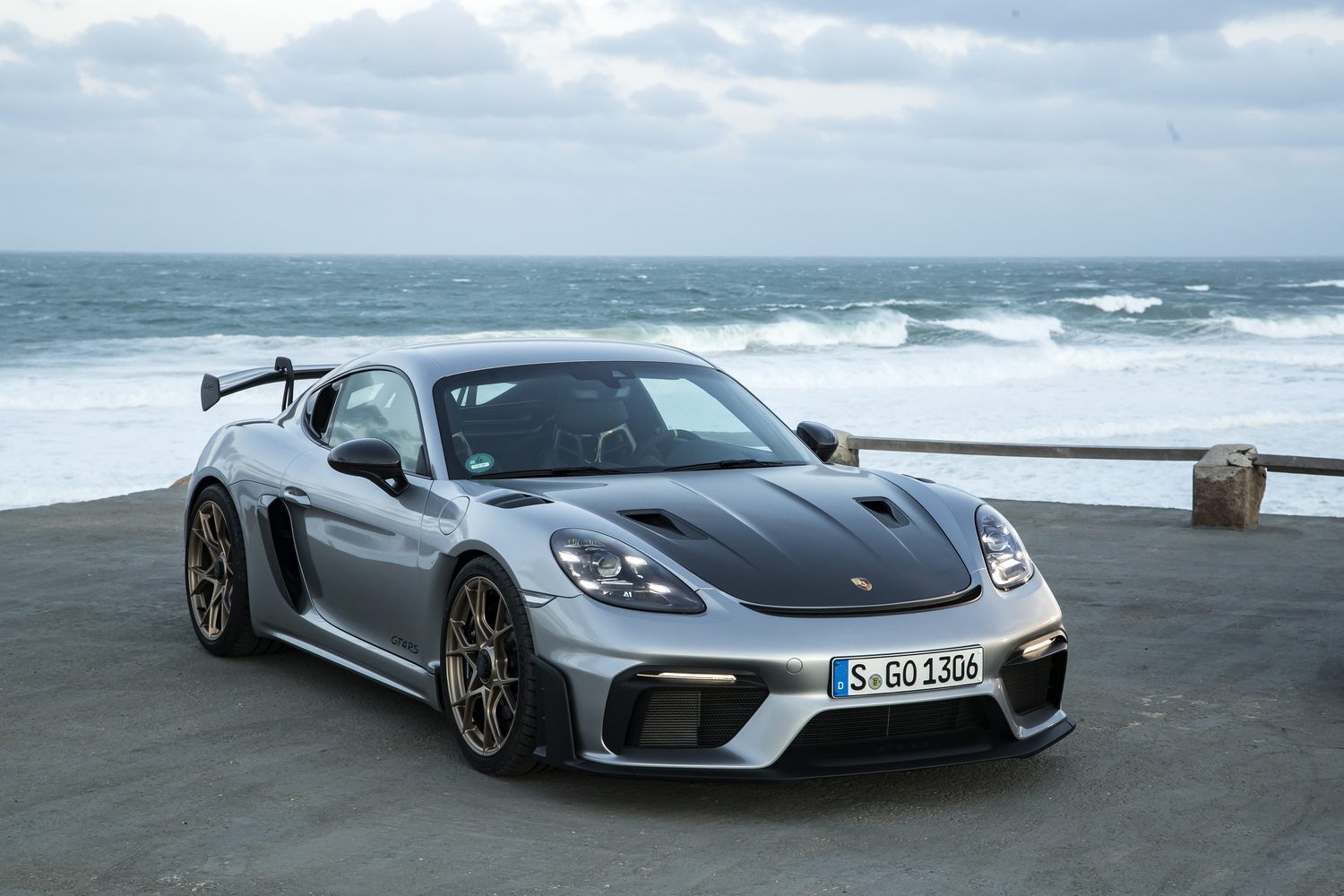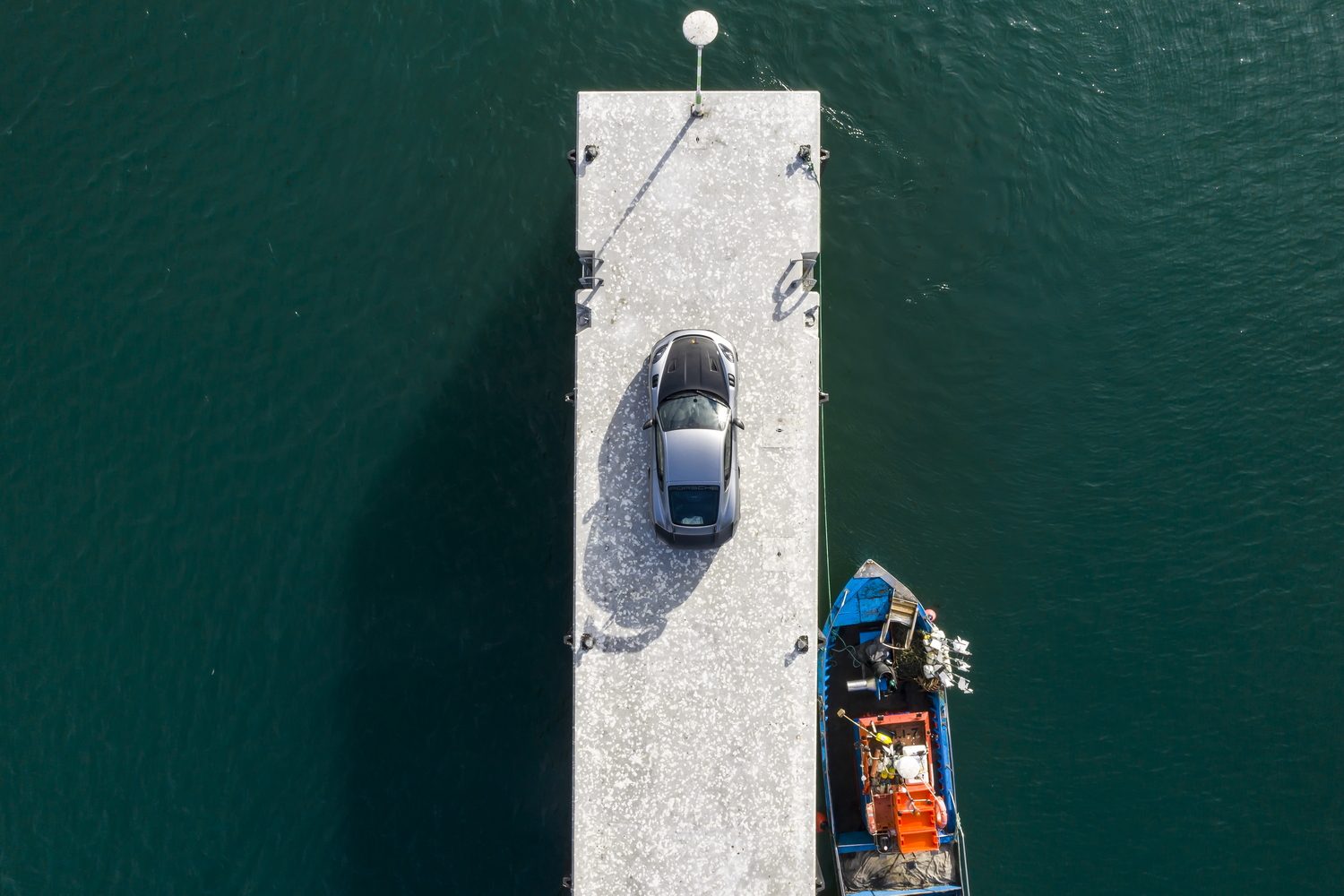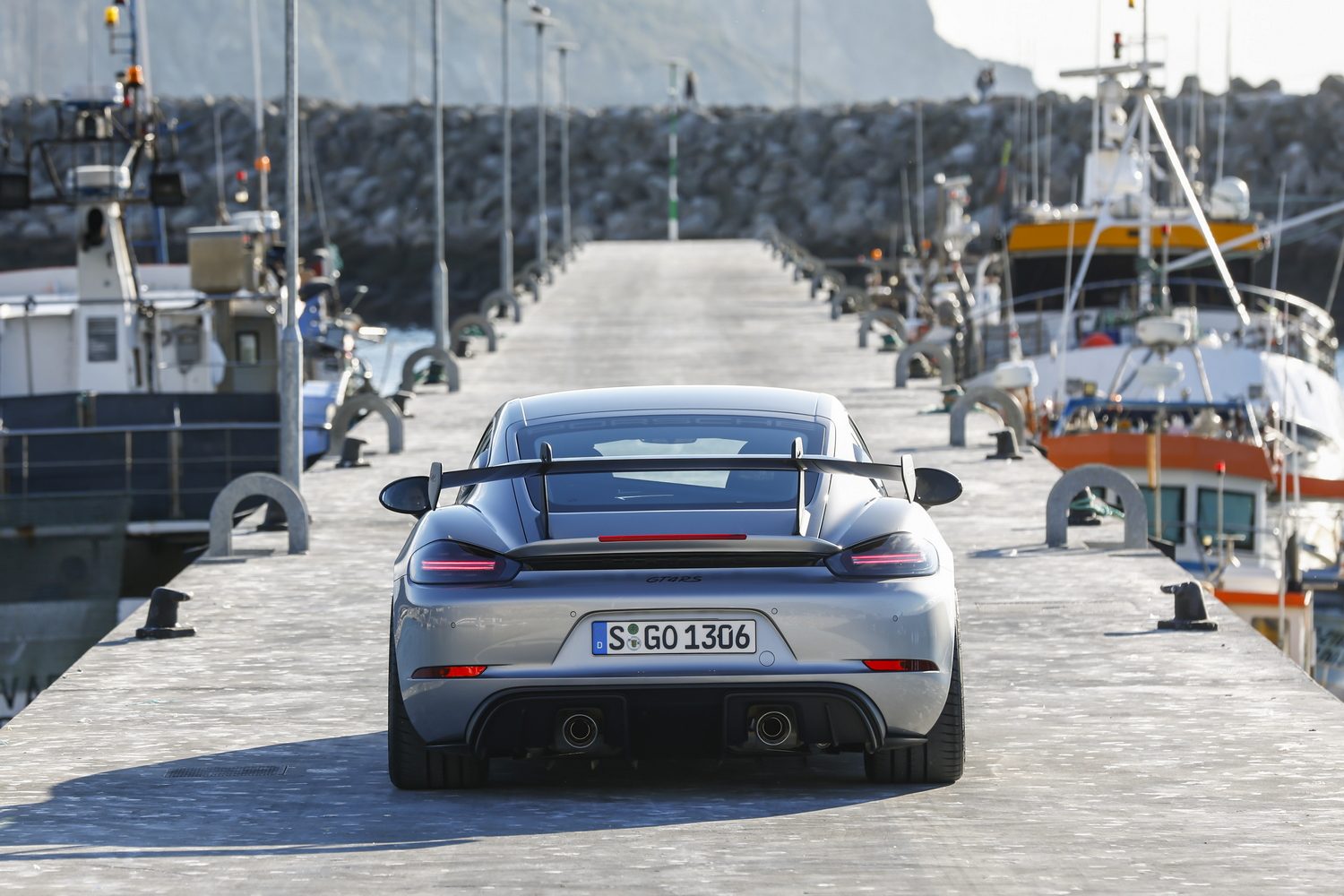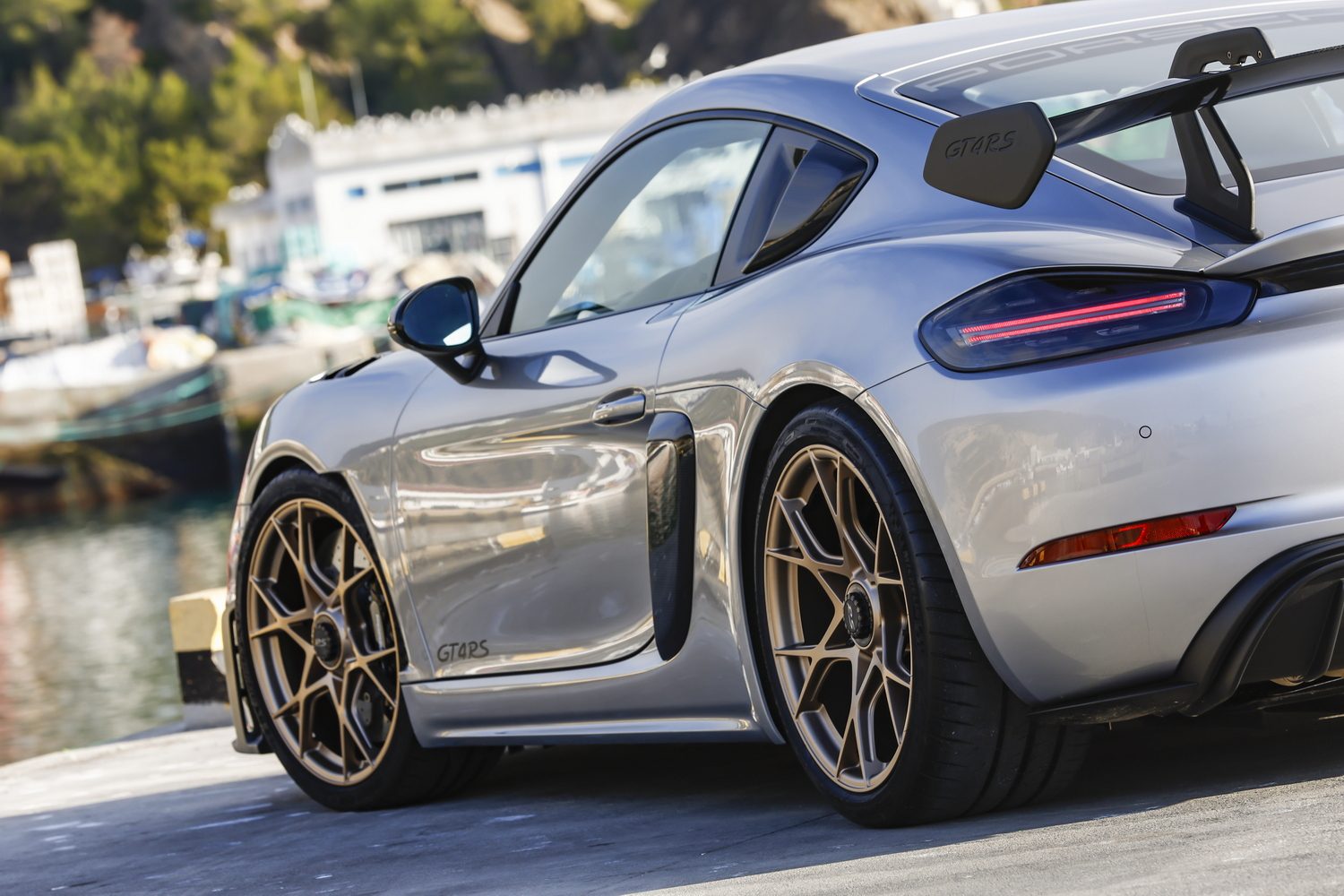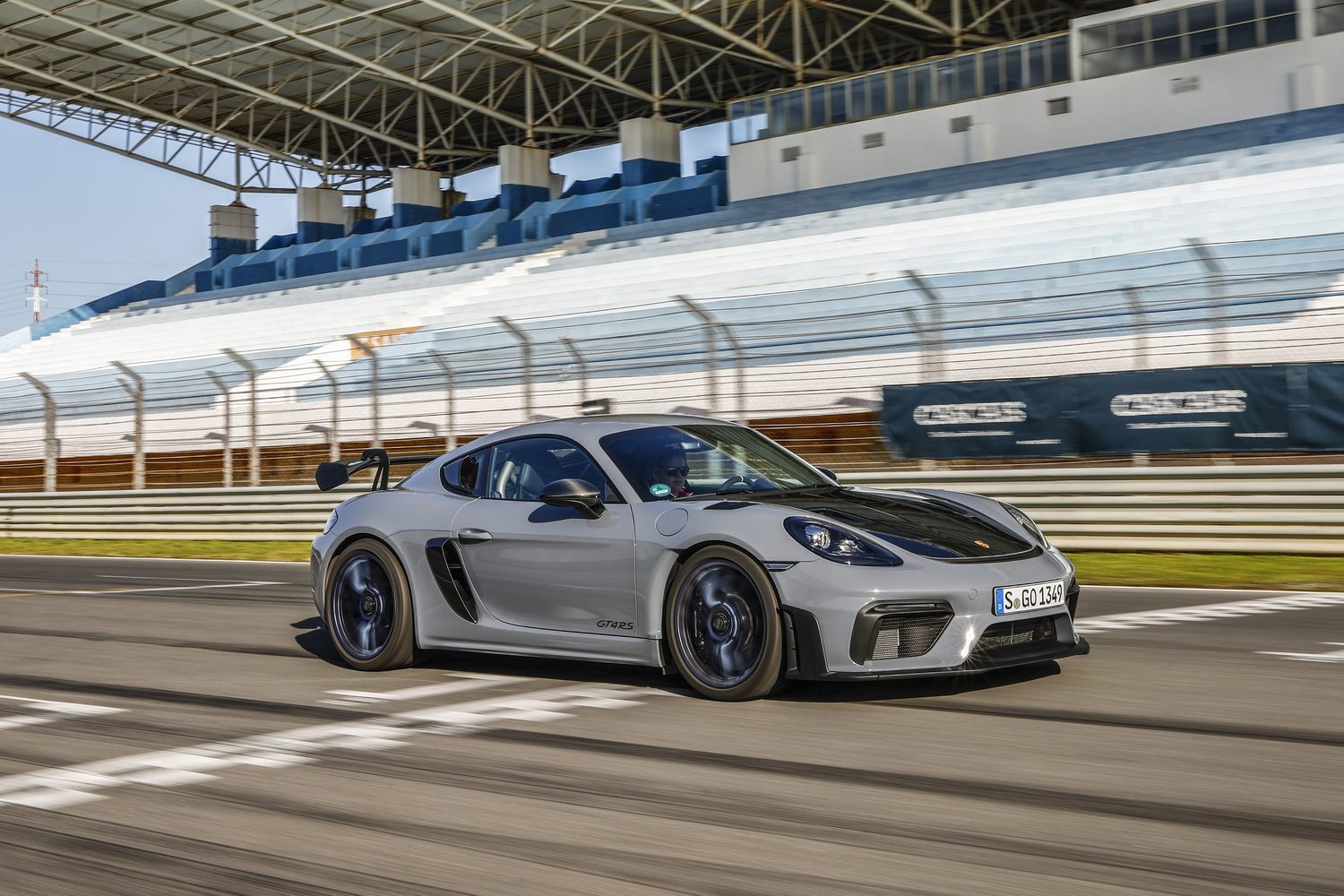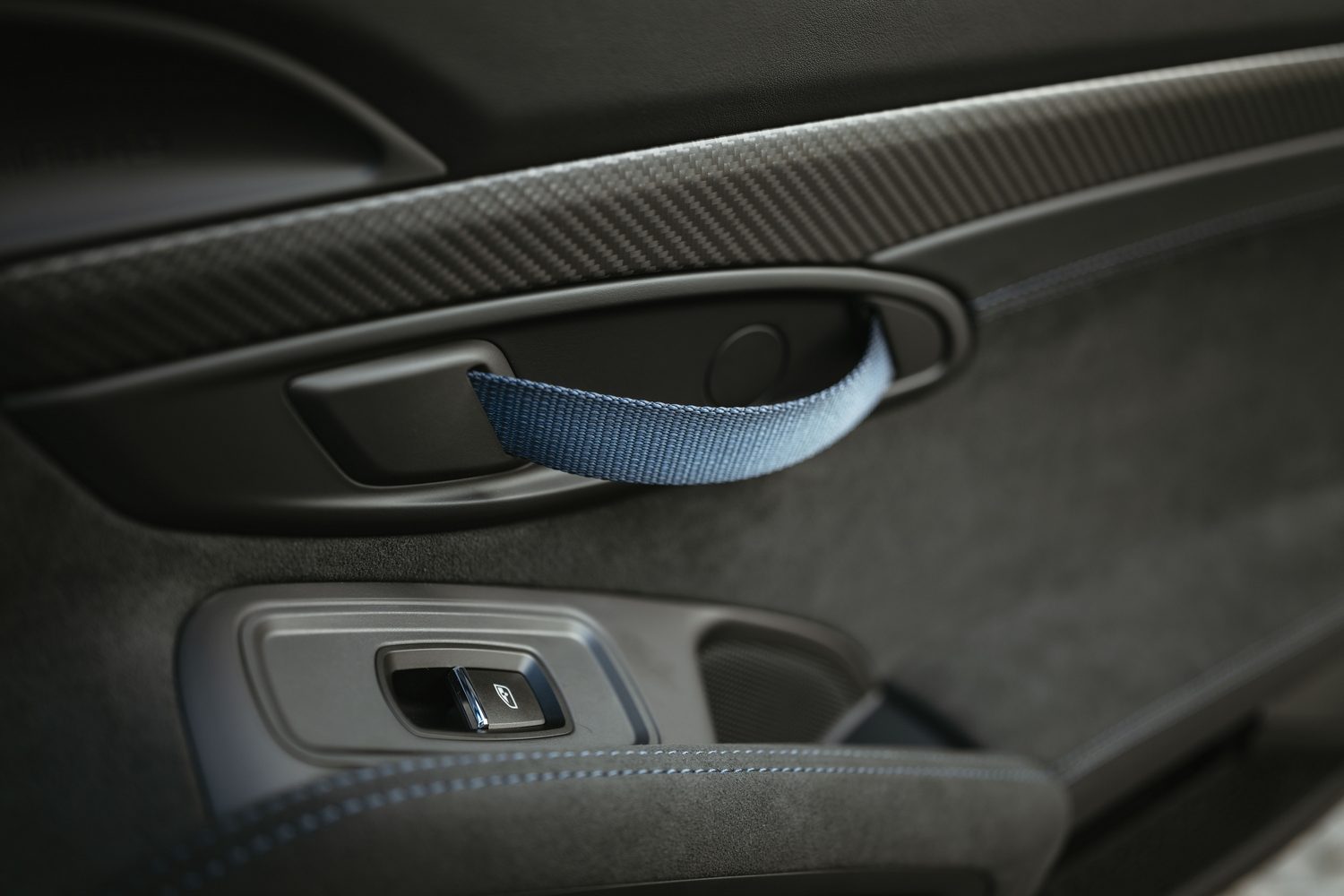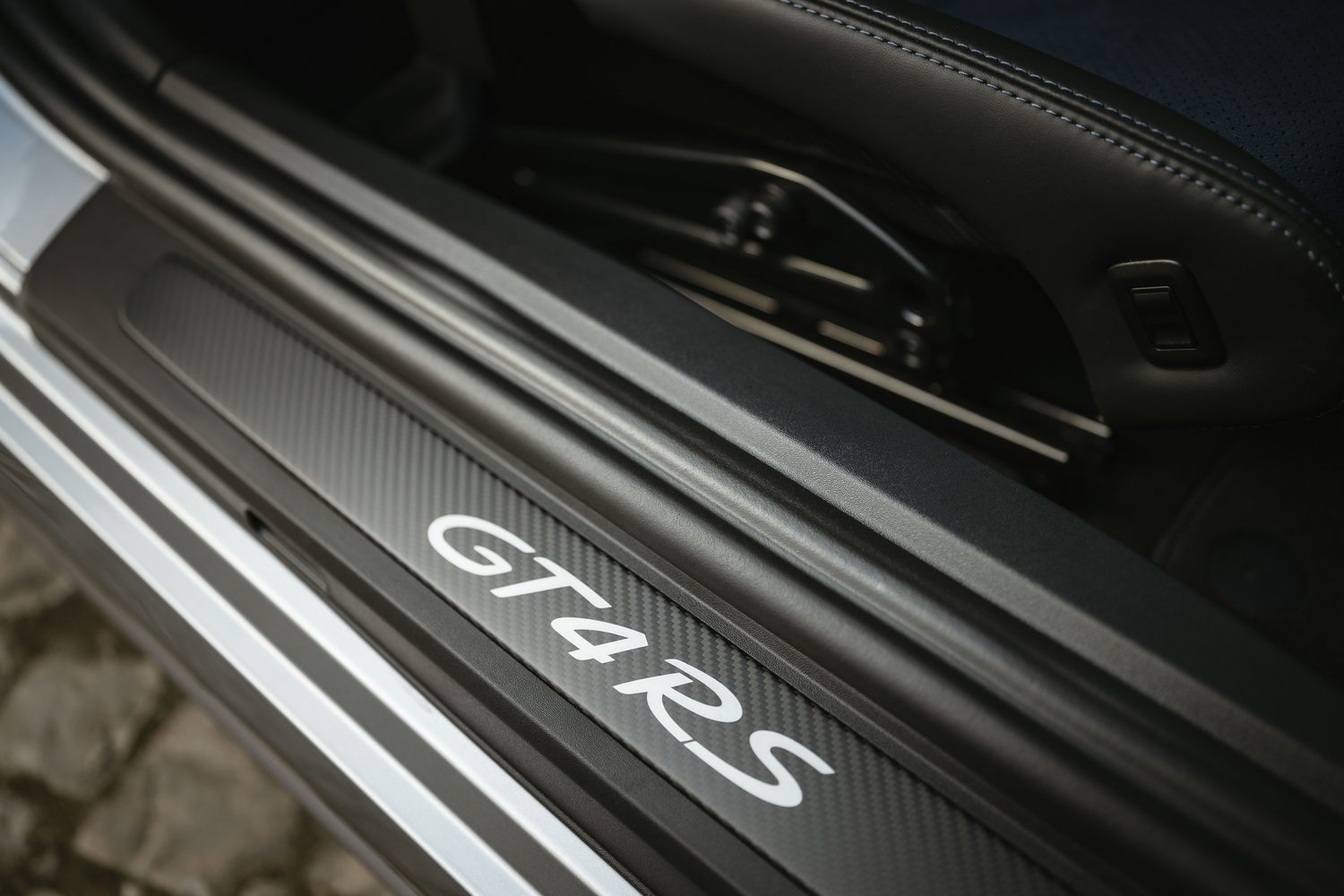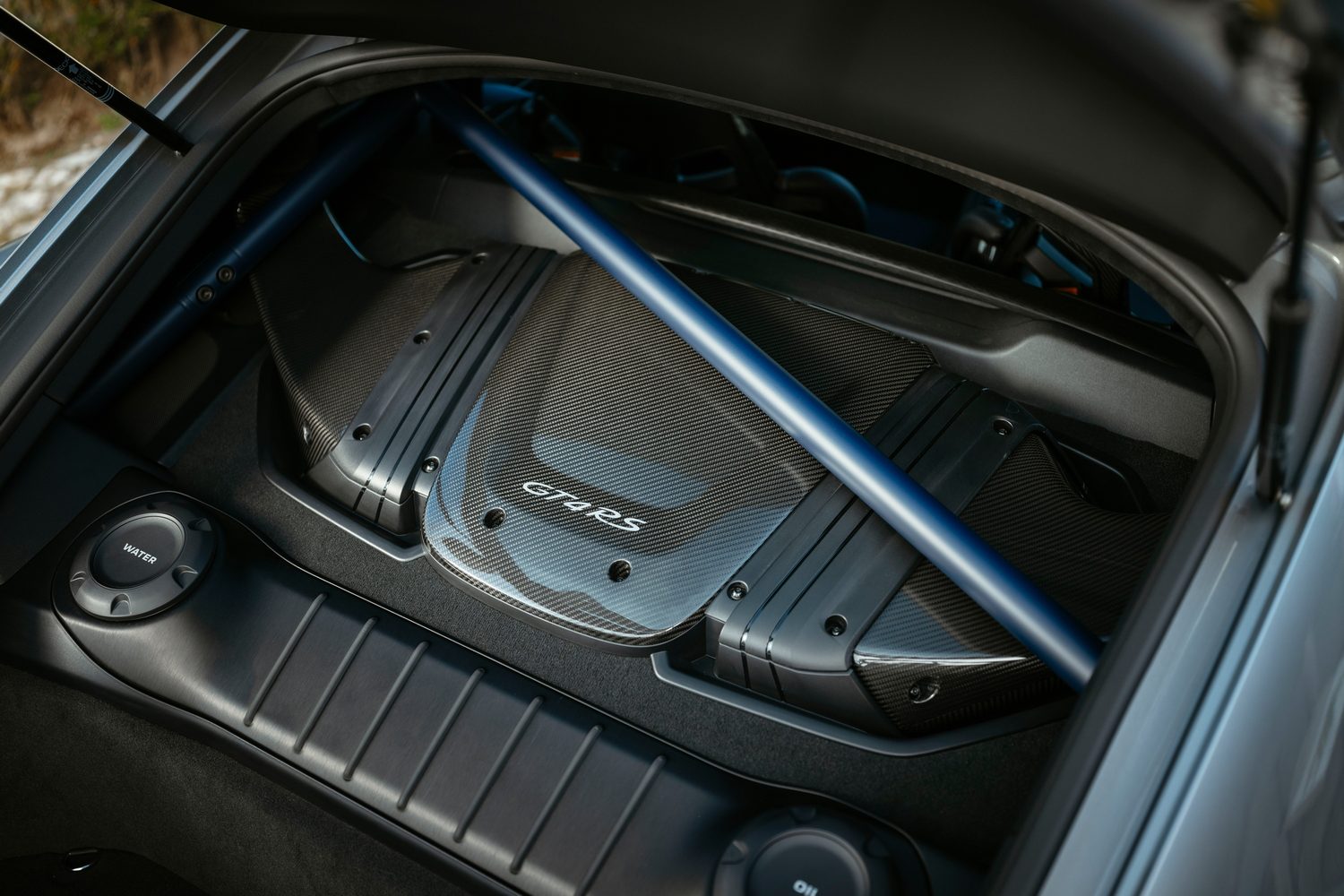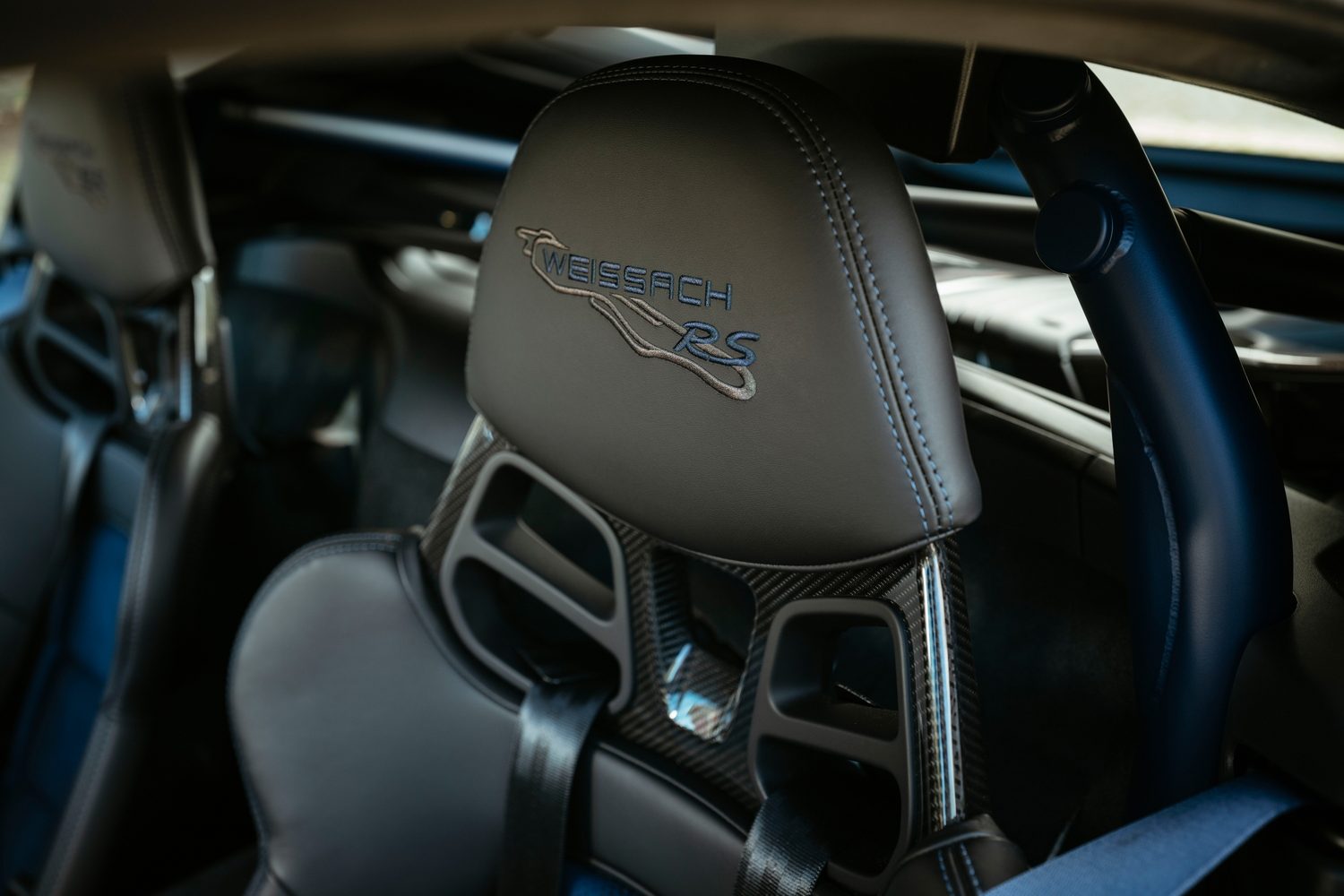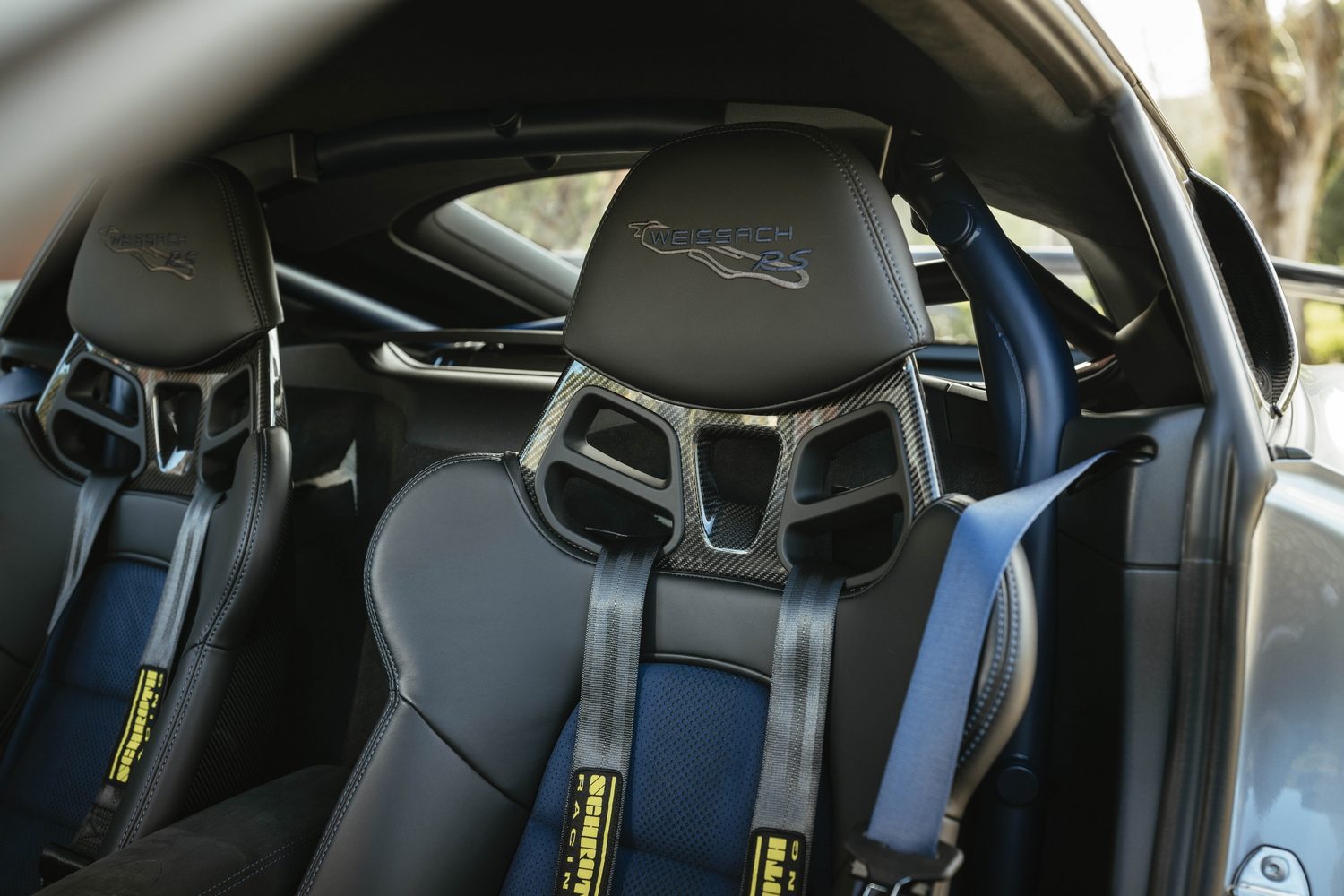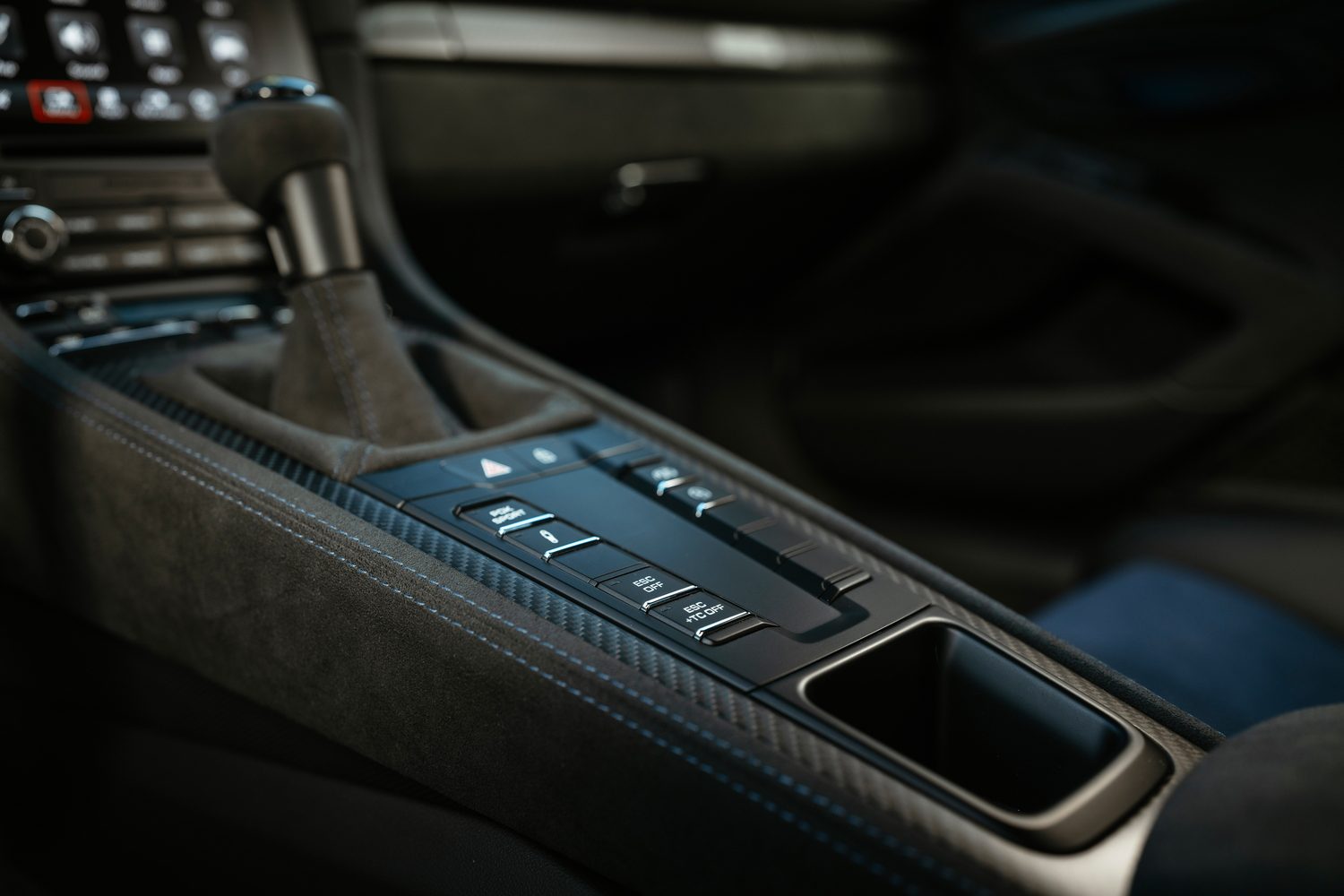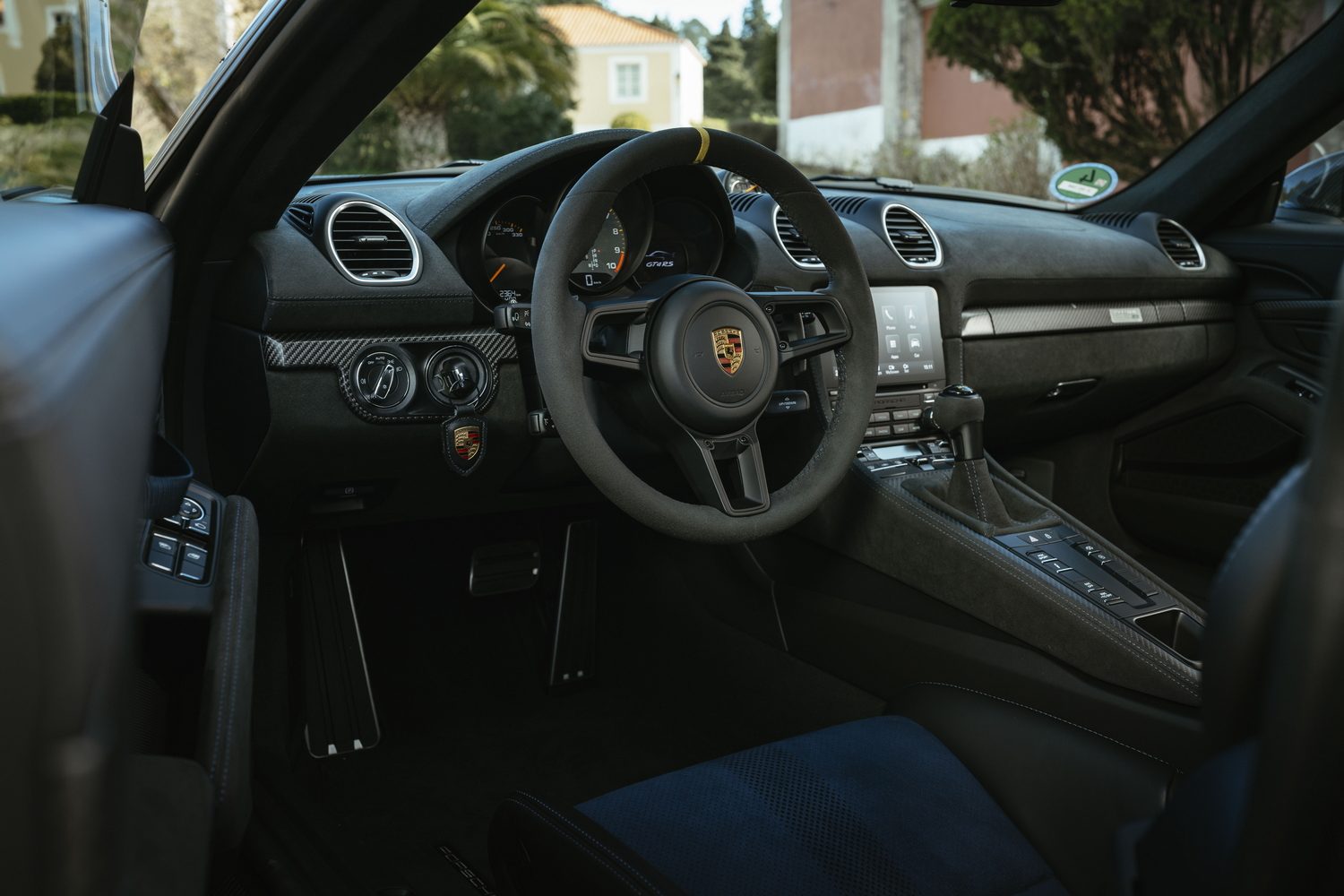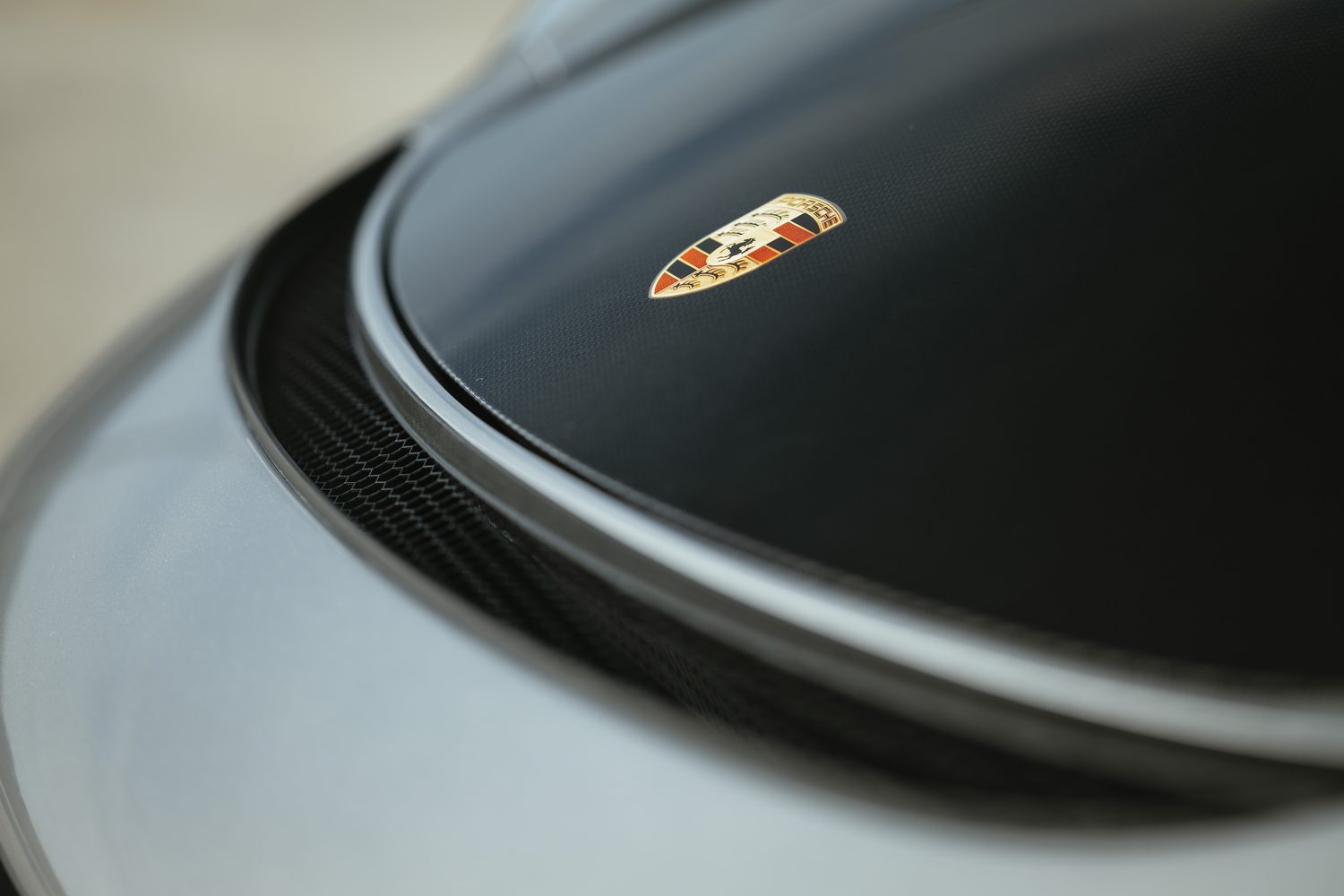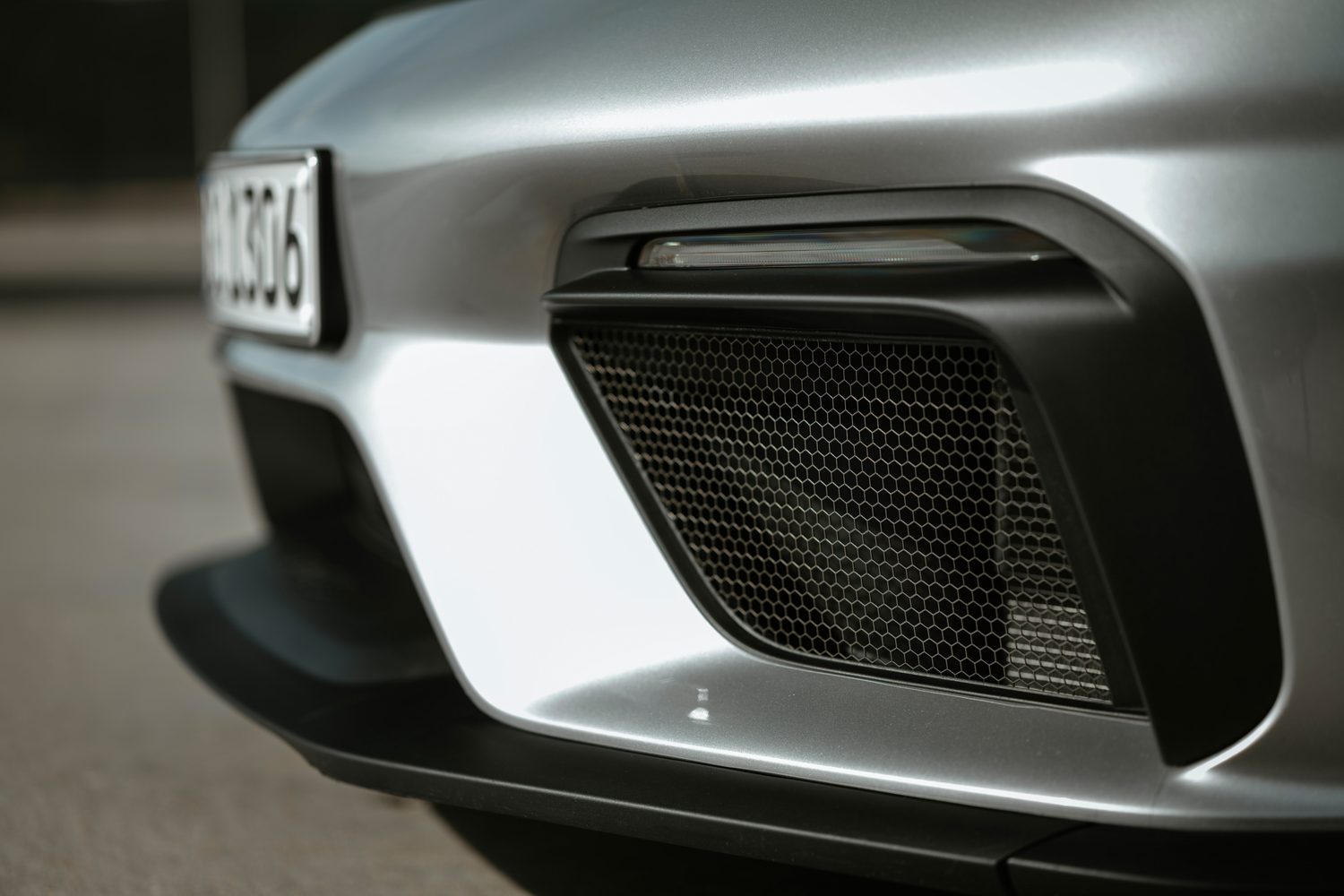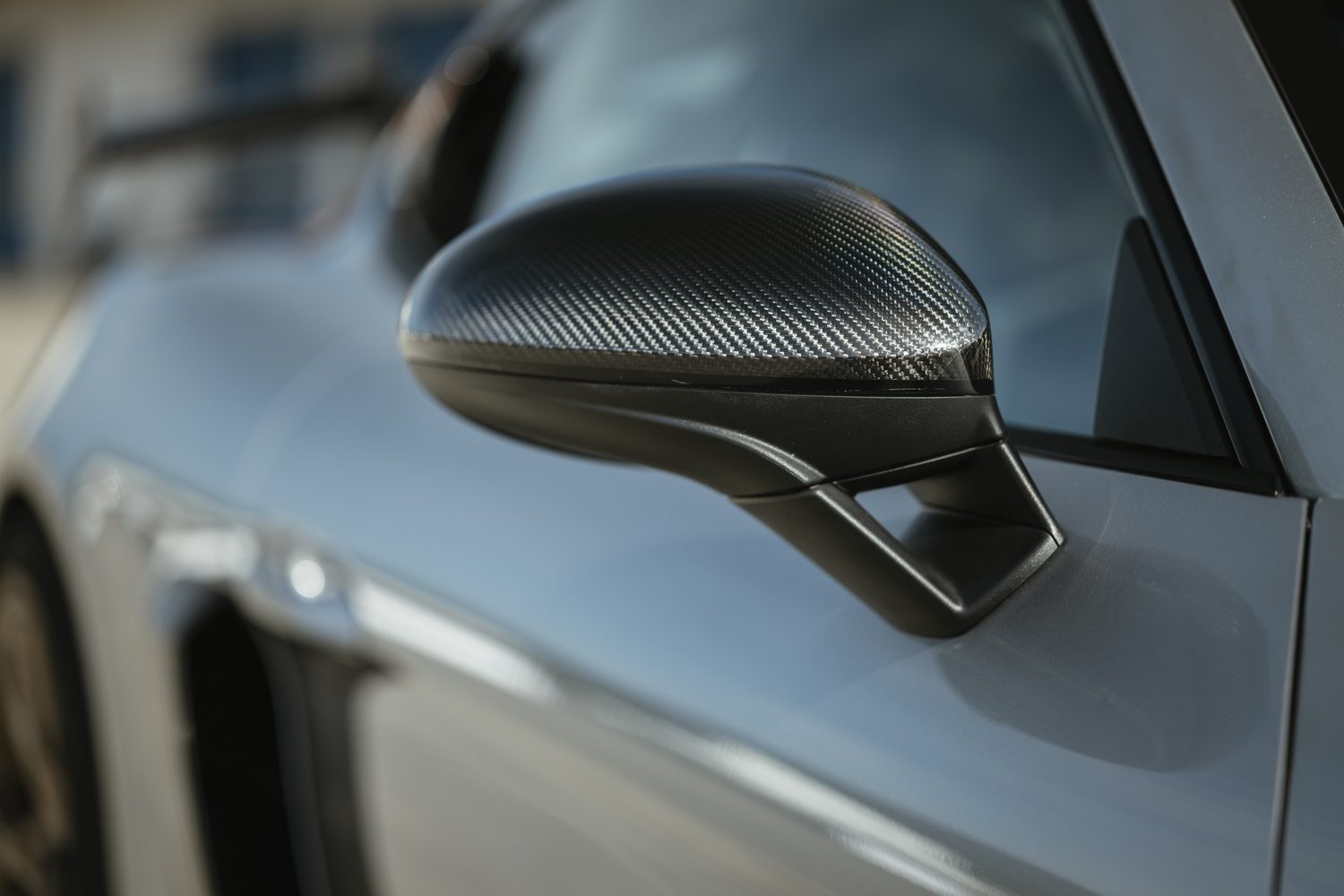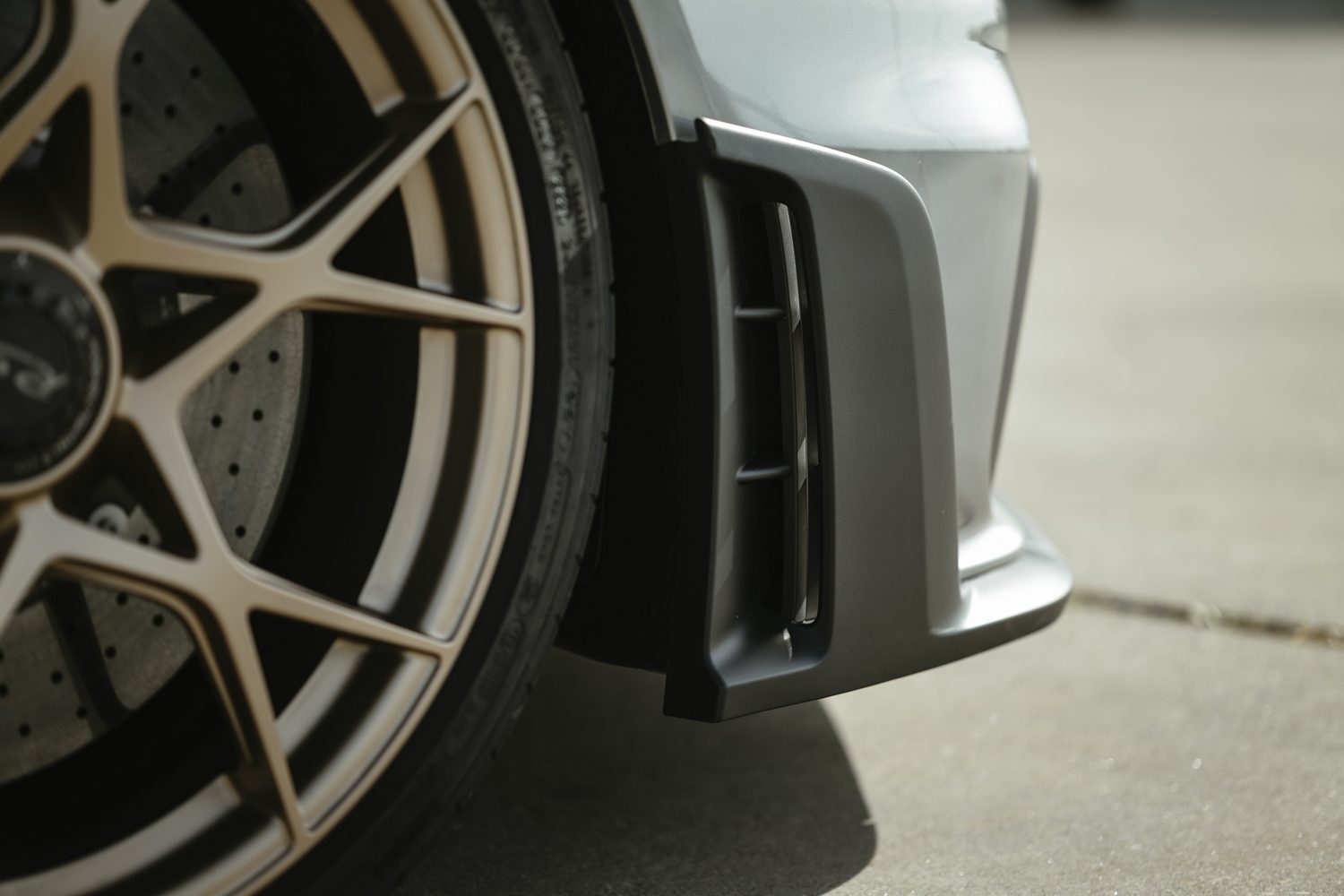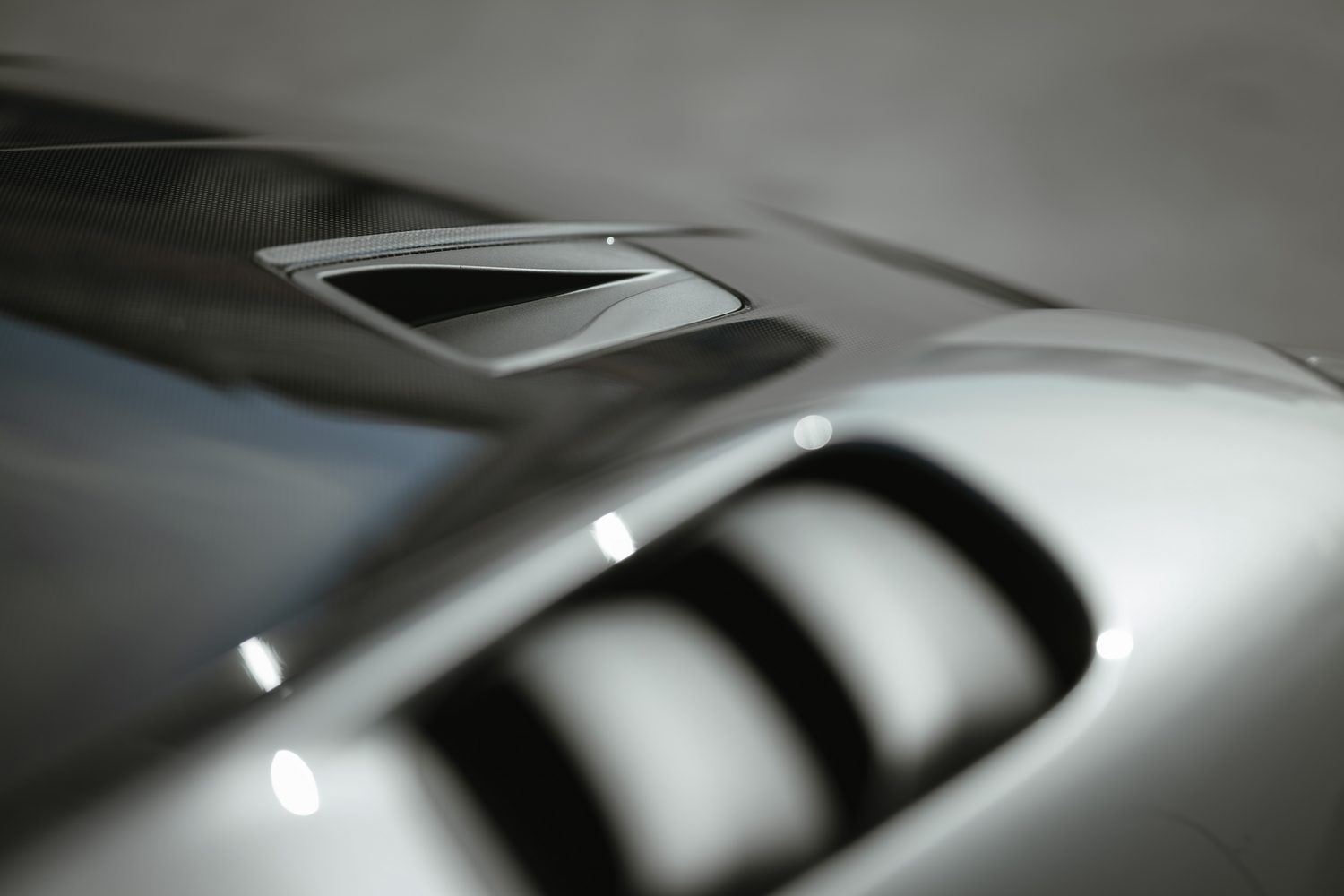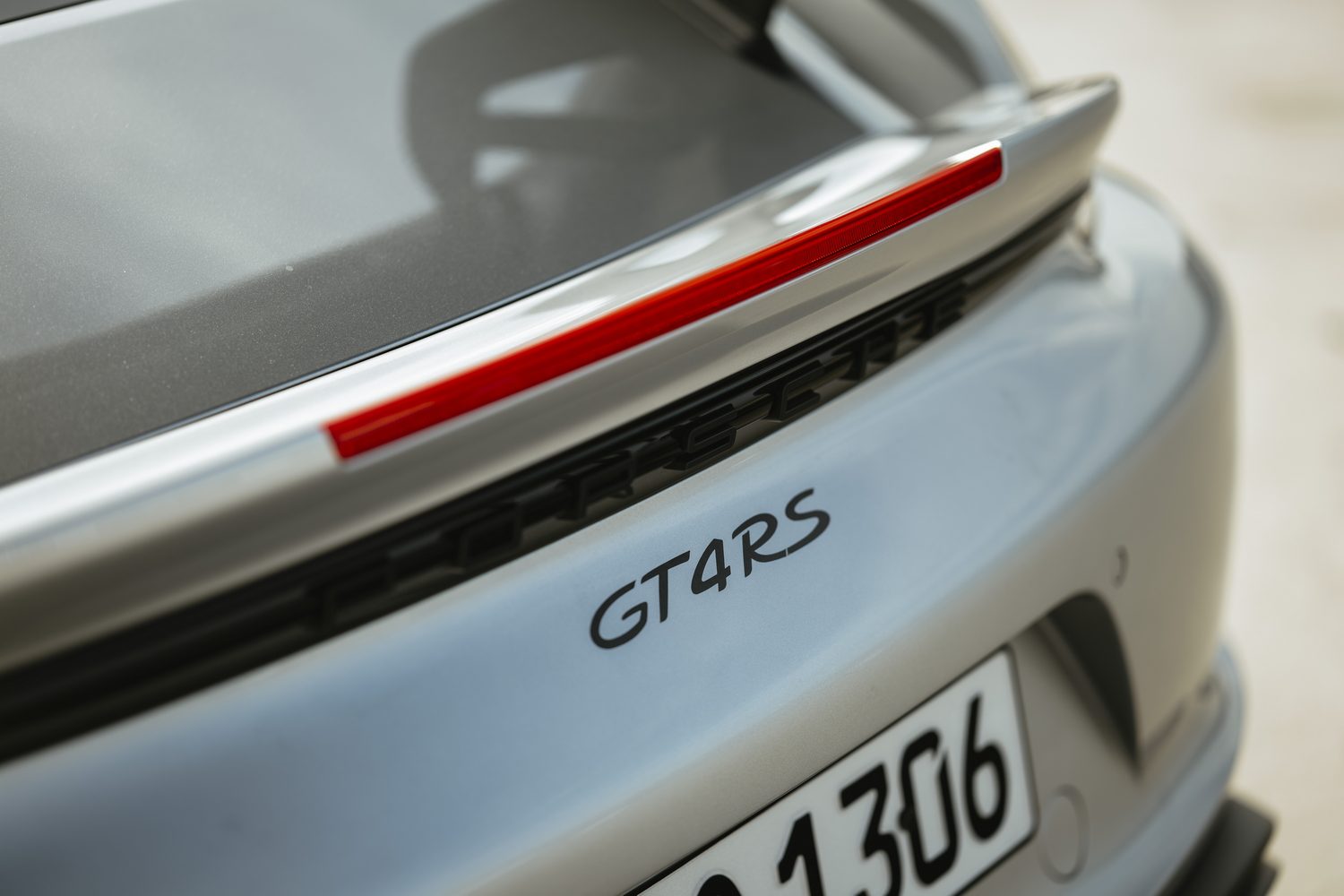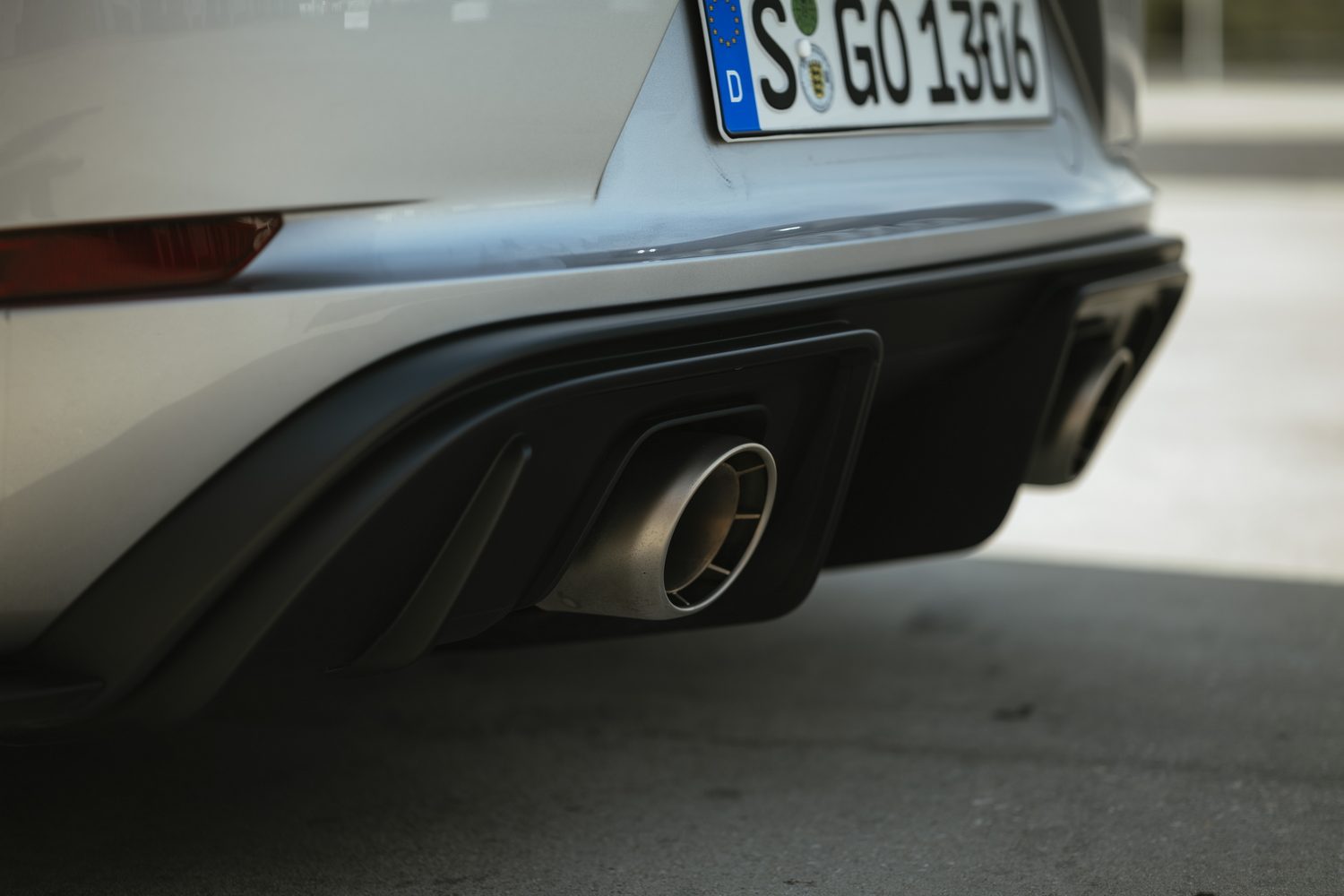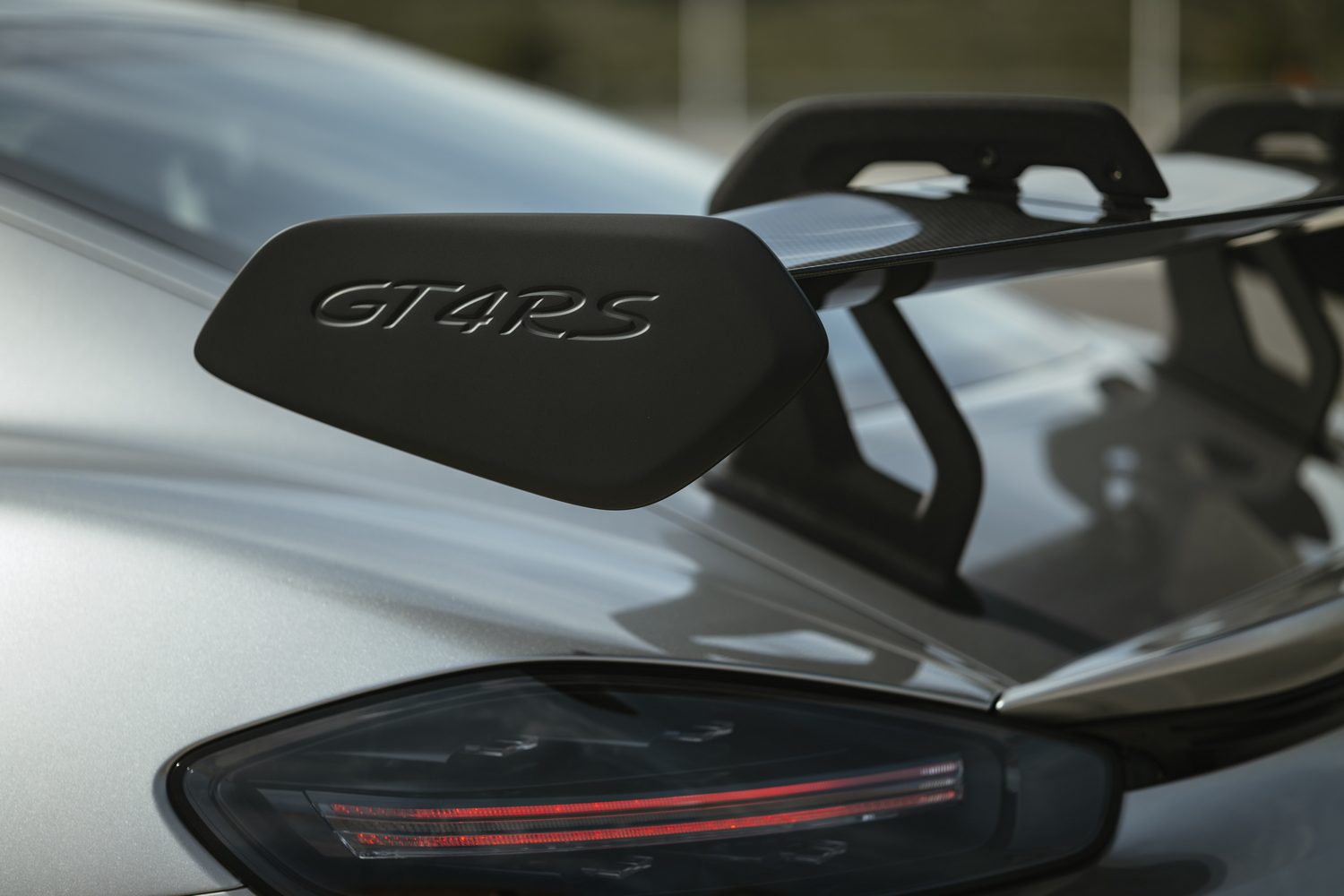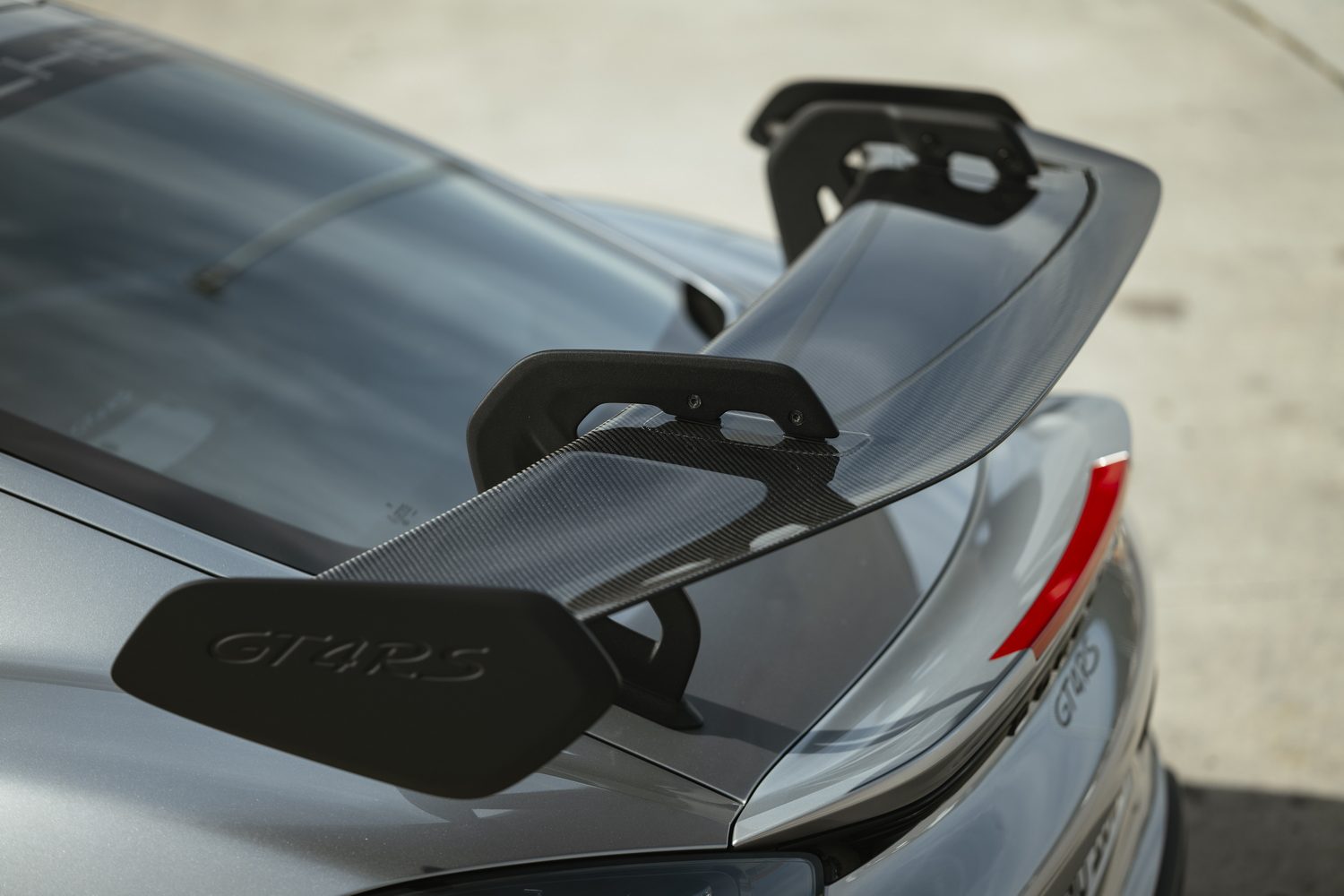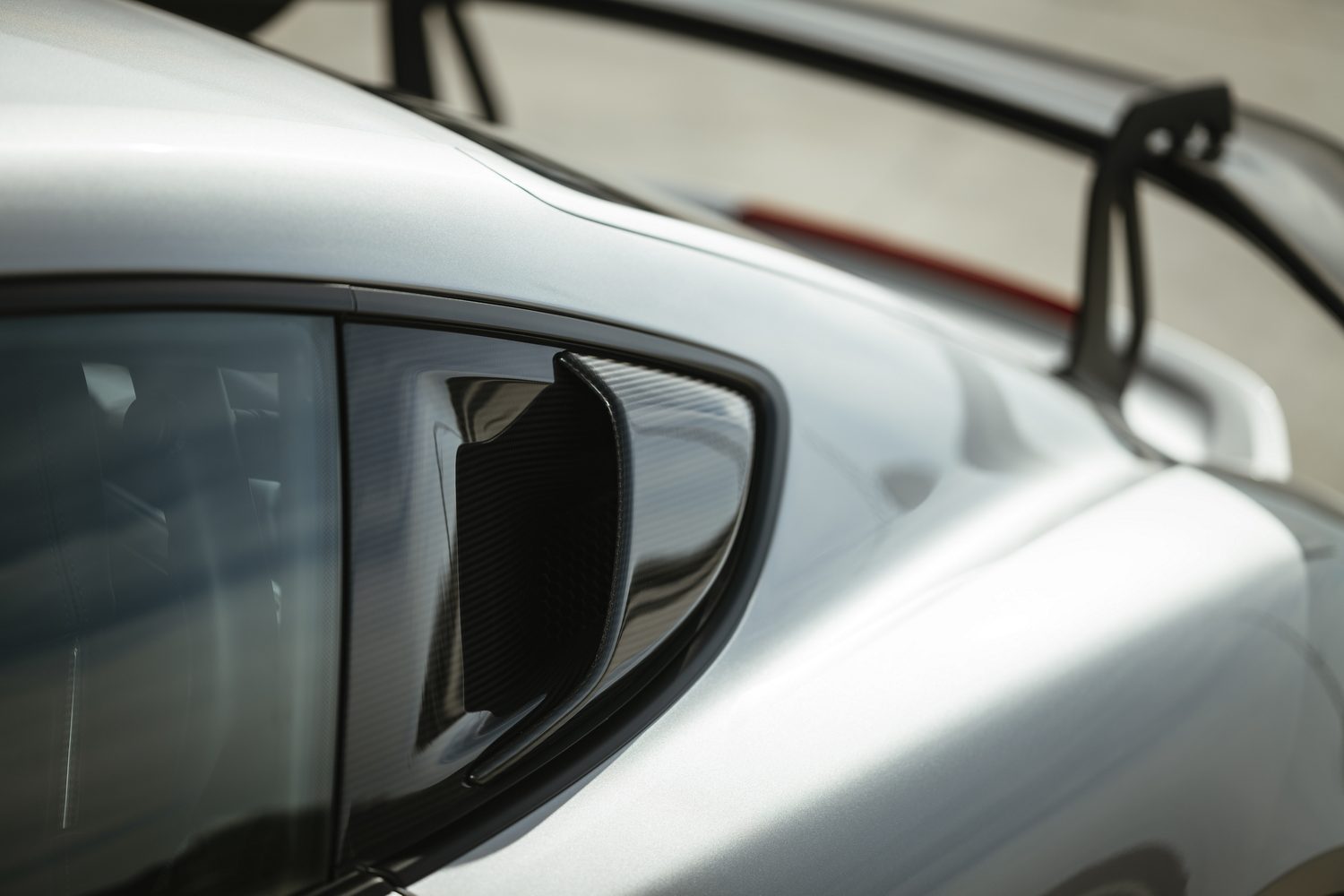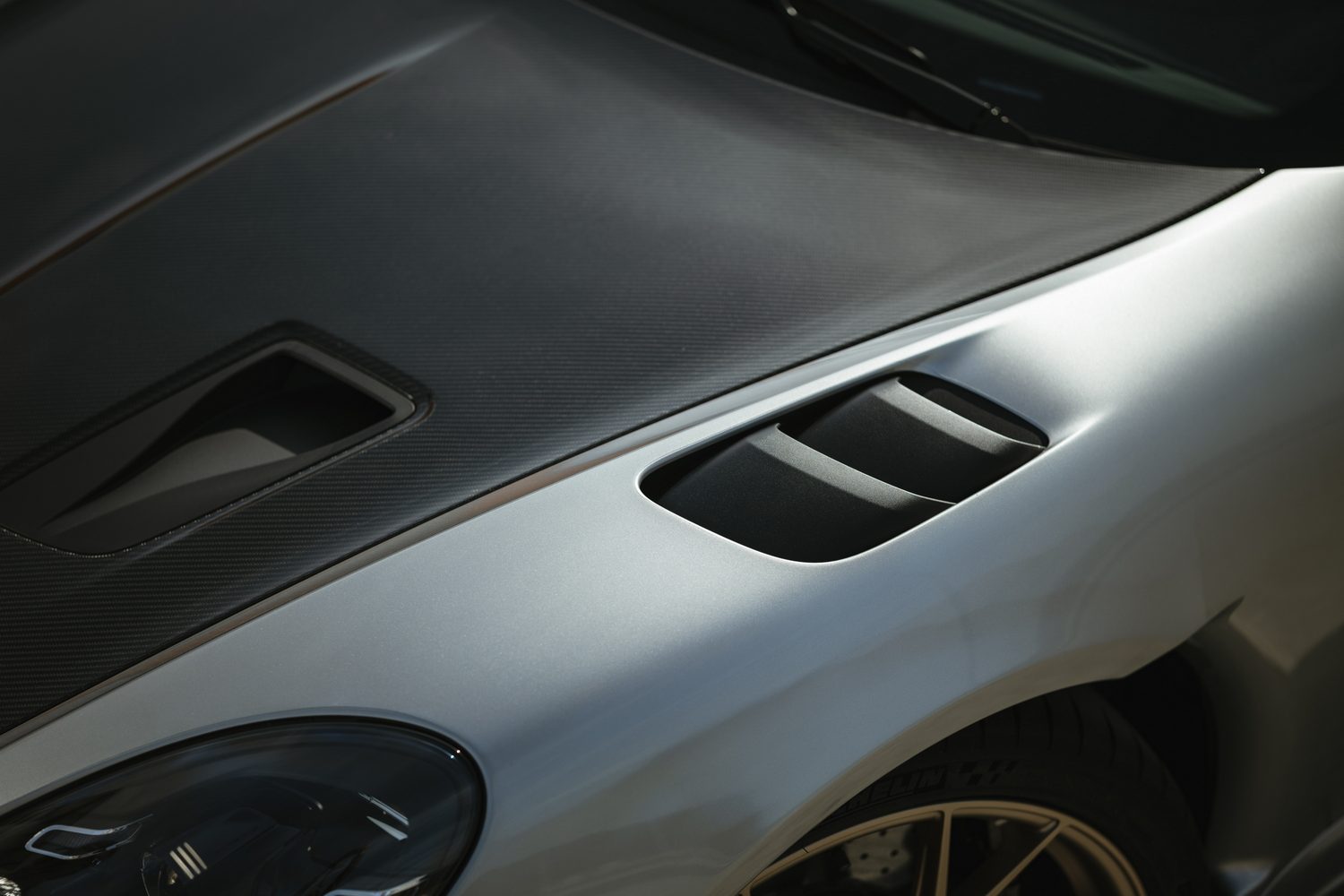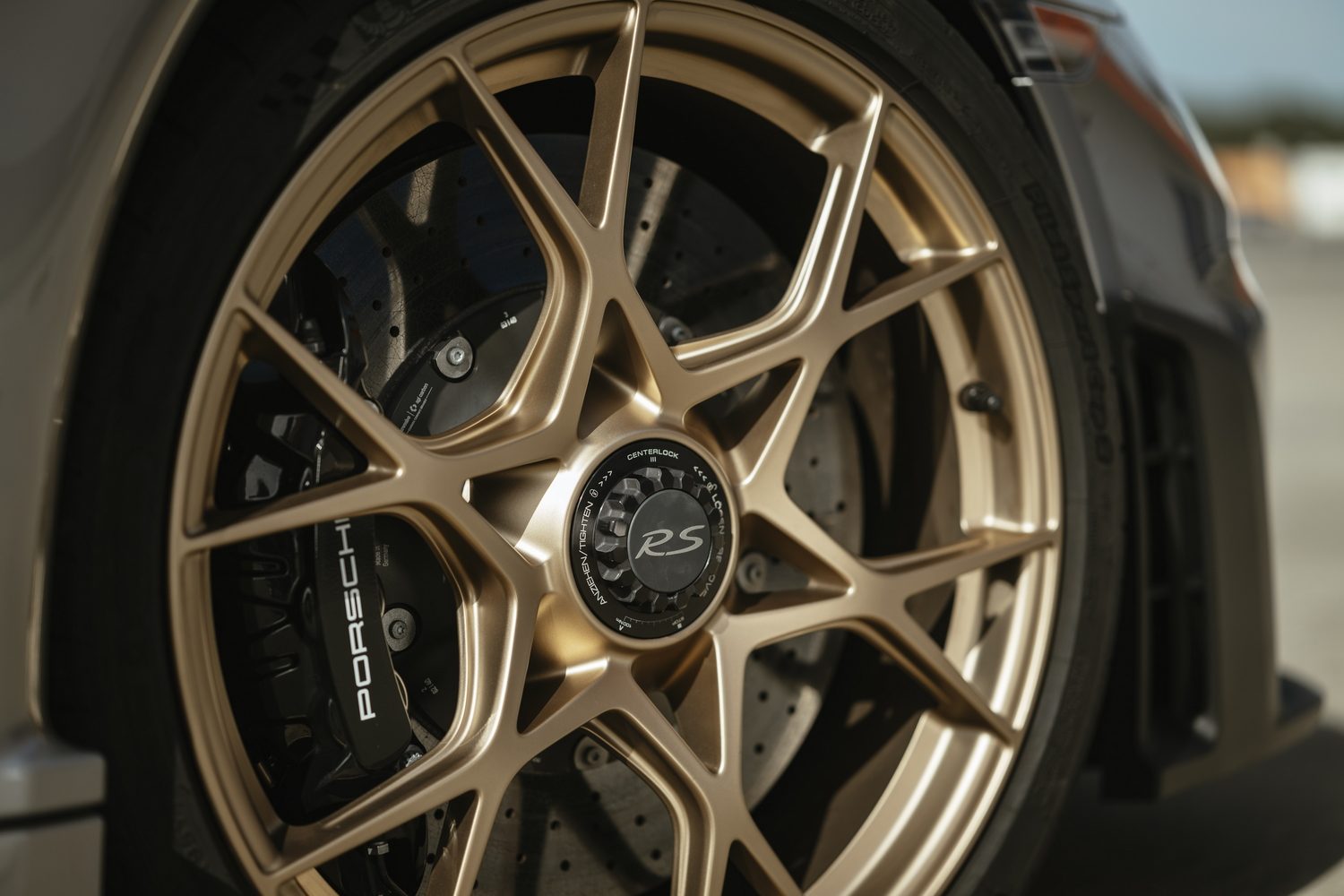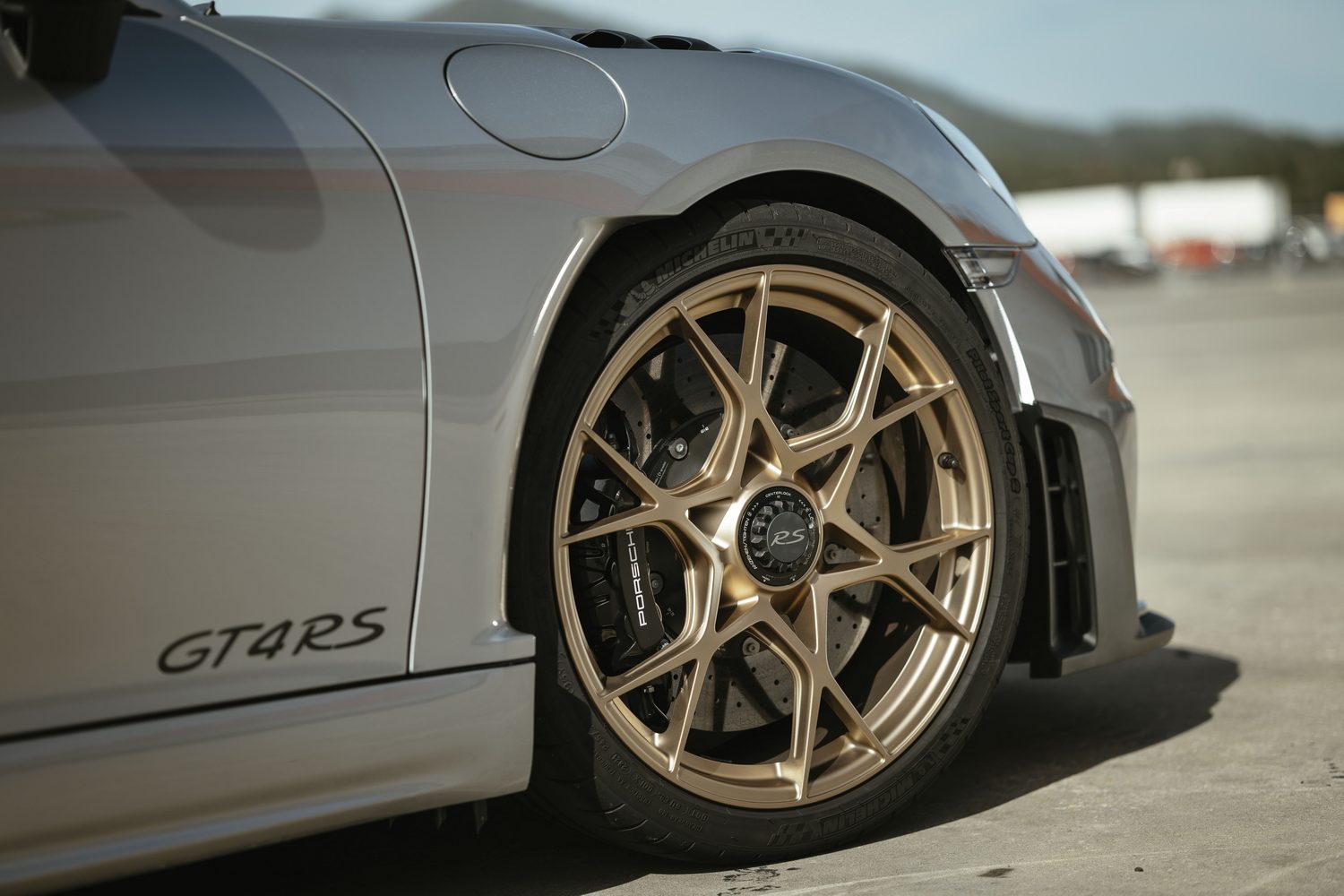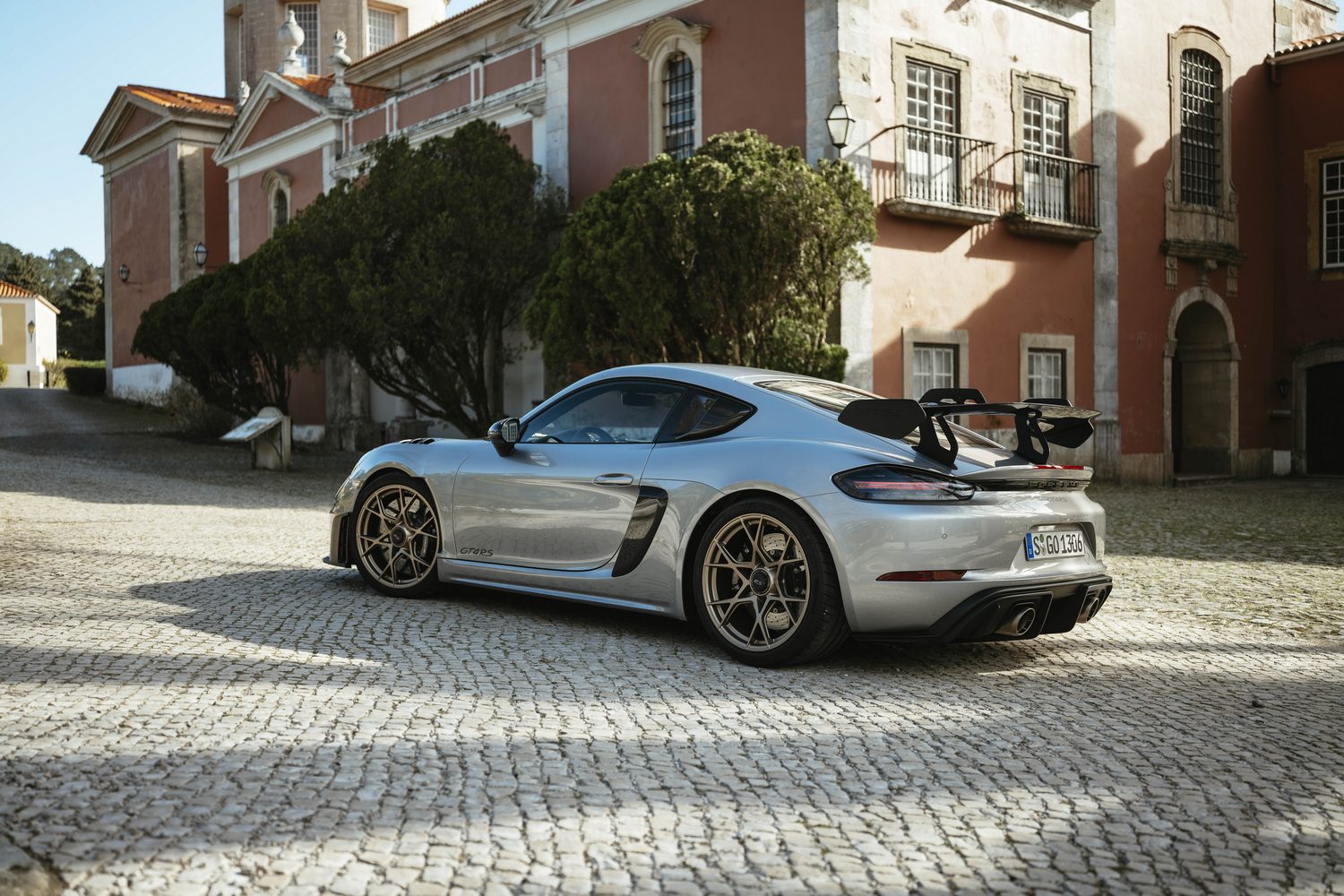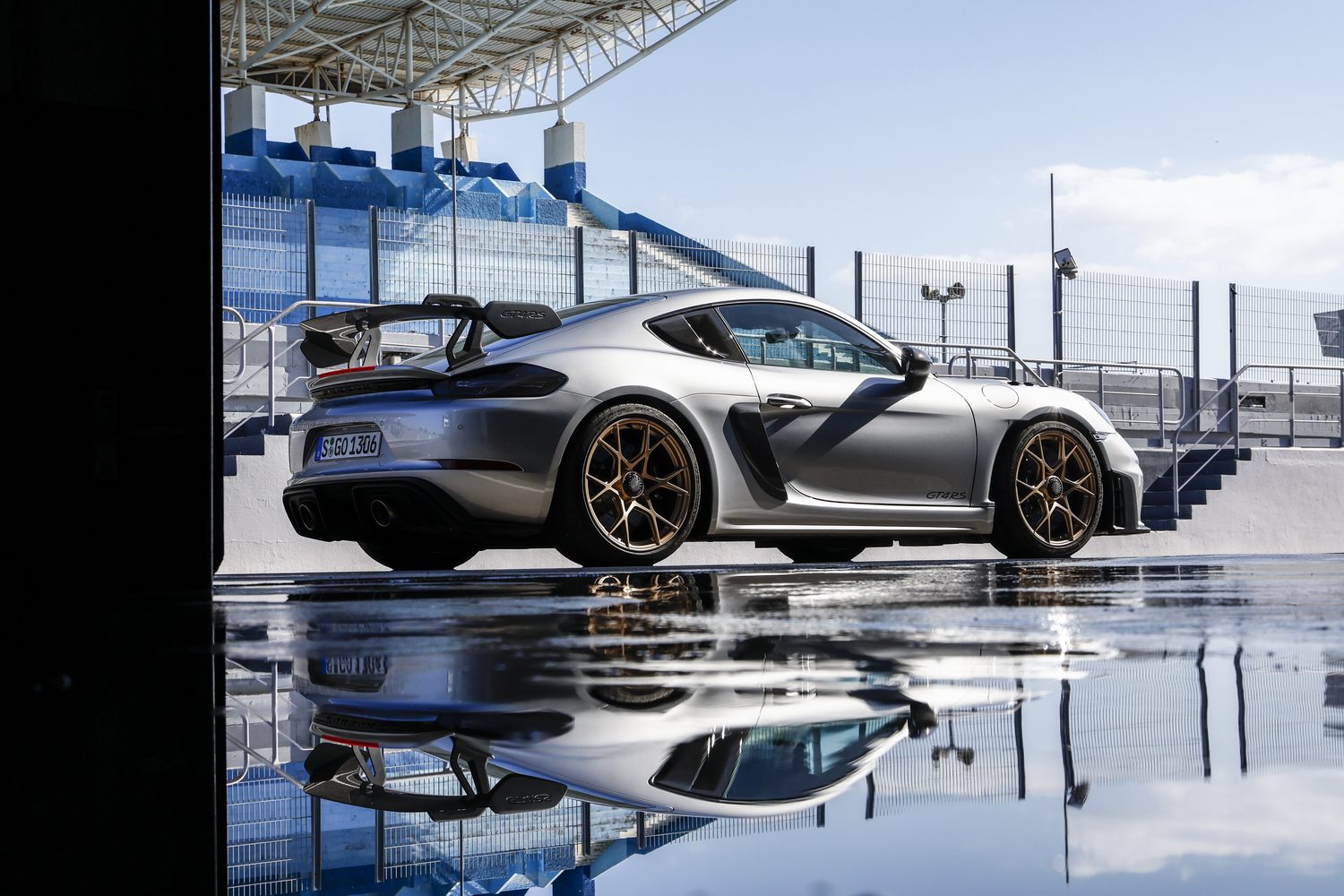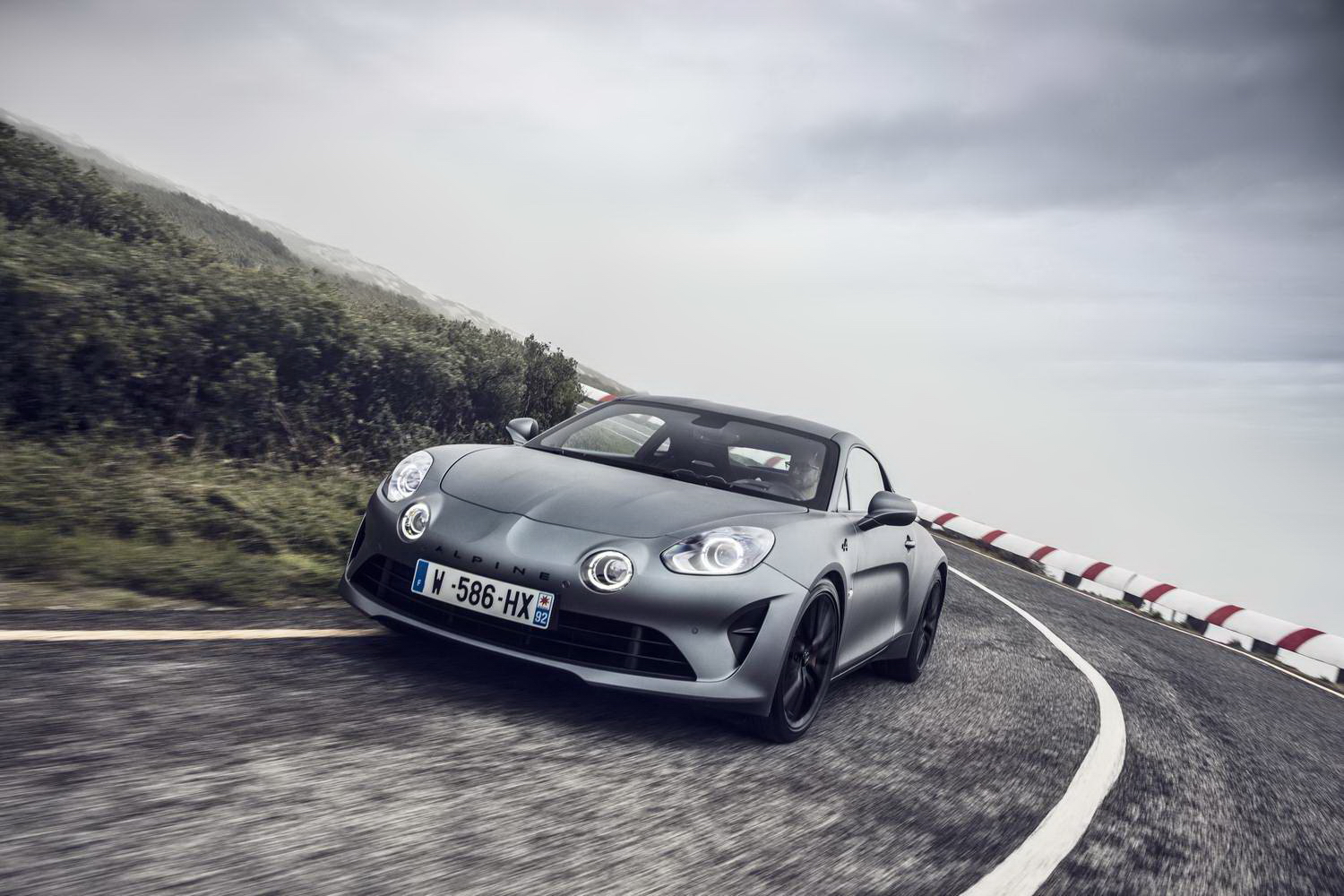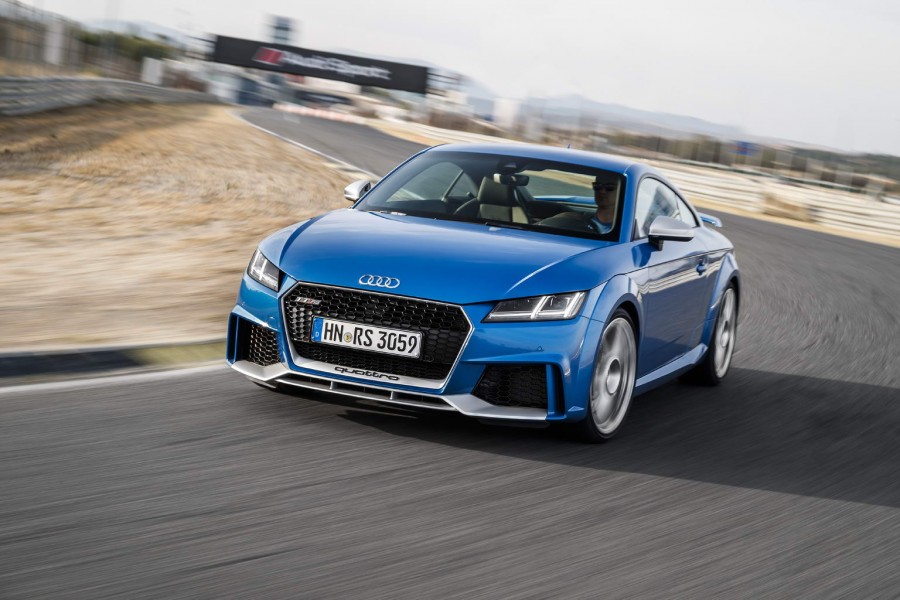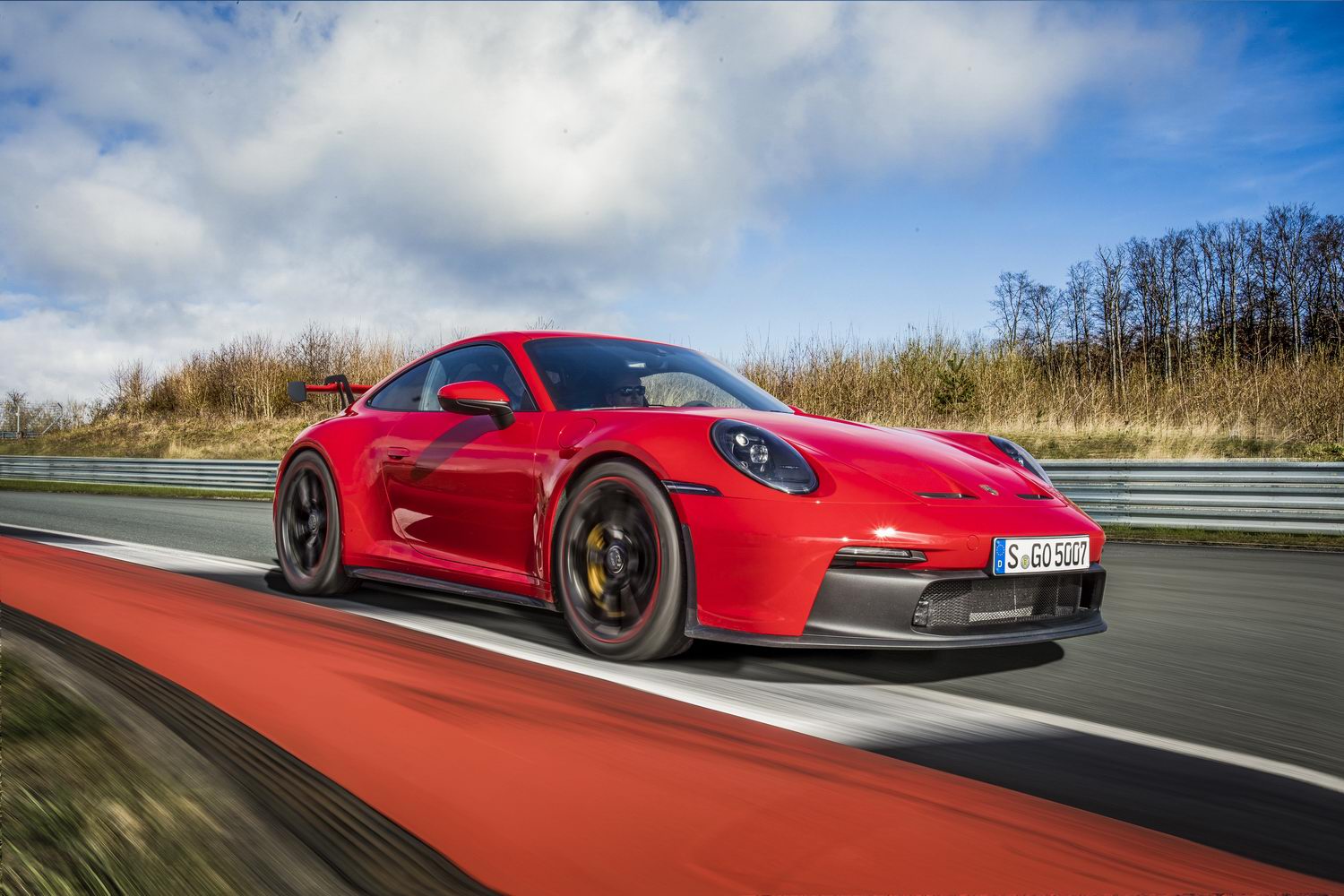From the moment the Porsche 718 Cayman GT4 arrived on the scene, an even more powerful RS version became something of an inevitability. But all is not what it seems. This car isn't really building on the brilliant GT4's foundations, but ripping them out and starting all over again. The GT4's fabulous flat-six engine is gone, replaced with a similarly sized engine from the 911 GT3, while there are new aerodynamic features and lightweight components. The spectacular result is not just better than the GT4, but on a par with the fearsome 911 GT3.
In the metal
You don't have to spend long looking at the 718 Cayman GT4 RS to realise it isn't a standard model. This most focused version of the Cayman is an altogether more aggressive thing, set apart by more than just a massive rear wing. Of course, the aerodynamic features dominate because the basic body shell is much the same as that of any other Cayman. But where normally there are smooth, rounded lines, the GT4 RS has jagged edges designed to help it stick to the road or to feed its 4.0-litre engine with air.
Chief among these is that huge wing, which is very similar to that of the 911 GT3. Sitting high above the rear of the car, it hangs from swan-neck supports that keep the 'active' lower surface of the wing smooth, making it more efficient and therefore pushing the wheels down more effectively. Porsche has fitted "aerodynamically optimised" underbody panelling that's connected to the rear diffuser in a quest to create more downforce, while there's also an adjustable front diffuser and a new front spoiler lip with flow-around side blades. In Performance mode, which is solely for track use, Porsche claims the GT4 RS generates approximately 25 per cent more downforce than the regular GT4.
But the changes aren't all about downforce. Porsche has also tweaked the car to feed the 4.0-litre flat-six engine (more on that later), replacing the quarterlight windows behind the doors with air intakes. The side intakes down in front of the rear wheels remain, but they exist to cool the engine down. And cooling leads us neatly on to the front wheel arch vents, which stand out on the front wings and give the car an even more motorsport-inspired look.
Add all that to the 30mm drop in ride height compared with the standard Cayman and the GT4 RS looks like a true road-going racer. And that is compounded by our test car's Weissach package, which includes the carbon-weave front luggage compartment lid, magnesium alloy wheels and titanium exhaust, as well as the Porsche lettering across the rear window.
The sporty look continues inside, where both seats are full lightweight buckets with carbon-fibre, while the conventional 718 dashboard is lined with Race-Tex microsuede upholstery. The steering wheel, which is devoid of distracting buttons, even comes with a yellow 'dead-ahead' mark.
To that mix, the Weissach package adds even more Race-Tex trim and Weissach embroidery on the head restraints, as well as six-point racing harnesses for track use. These are fitted alongside conventional three-point seatbelts, allowing you to leave the restrictive harness unfastened when driving on the road.
Aside from all those additions, the GT4 RS interior feels more lavish than you might expect from such a single-minded sports coupe. Two-zone climate control and navigation still feature as standard, while there's Apple CarPlay smartphone integration technology to keep you connected on longer journeys. And the quality is excellent, with the usual Porsche engineering on display to ensure everything you touch feels solid and substantial.
That said, the Cayman cabin is beginning to age a little, with the old-school infotainment system feeling remarkably outdated compared with Porsche's more up-to-date models, including the 911 GT3. The screen works well enough, but it's surrounded by fiddly buttons and the graphics look a little dated alongside Porsche's other tech. And the same is true of the digital displays in the instrument cluster, which continue to feel a bit 'last-generation'.
As complaints go, that is of course minor, but there are some other issues with the GT4 RS cabin. Among these is the question of space, which is a little bit limited. There's a 125-litre 'frunk' between the front wheels and a 136-litre bay under the rear window, but neither is particularly large or practically shaped. By the same token, the interior storage - door pockets and the like - is pretty meagre, and then we come to the visibility. Losing the rear side windows and fitting that enormous wing means seeing out is an issue at times, and if you have the harnesses done up, you won't be able to lean forward for a better view at junctions.
All that means the Cayman doesn't make much sense as a daily driver, but then that isn't really the point. Porsche freely confesses that the GT4 RS is a toy, and a brilliant one at that.
Driving it
The most notable difference between the GT4 and the RS is hidden from view. Deep in the bowels of the car, wedged in behind the rear seats and in front of the rear axle for ideal weight distribution, is the 4.0-litre flat-six engine from the 911 GT3. There are no turbochargers to be found in there either - this engine doesn't need any assistance to produce ungodly amounts of power.
In total, this engine churns out 500hp and 450Nm of torque, which is 80hp and 20Nm more than the standard GT4. Porsche enthusiasts will also note it's slightly less powerful than the 510hp 911 GT3. Apparently, it's because the mid-engine layout means the exhaust pipes need to be longer and more convoluted, which creates more pressure in the system and limits the power available. It's all very technical.
So too is the seven-speed automatic gearbox, which is different to that of the GT3, but it still has two clutches for faster gear changes. Porsche, being Porsche, still calls it the PDK, or Porsche Doppelkupplung, transmission. Thanks to those rapid changes and the reduction in weight - the RS is 35kg lighter than a GT4 with the PDK gearbox - this car is half a second faster than the GT4 to 100km/h. In fact, the 3.4-second sprint is identical to that of the 911 GT3.
In short, this is an extremely fast car, but Porsche has worked to make sure it isn't only fast in a straight line. The mid-engined design is perfect for handling, and the diet means the GT4 RS should feel more agile than the standard GT4 anyway, but Porsche decided more action was needed. As a result, the RS got a model-specific suspension set-up and some chassis stiffening to make it more responsive.
Of course, the GT4 didn't need to be much sharper - it's already a stunning car to drive and nobody would ever call it sluggish - but the improvements are apparent from the off. The RS responds more immediately to throttle and steering inputs, and there's slightly more feel for what's going on underneath you. The steering is alive in your hands, the seat rumbles under your pockets and the engine clatters and pops behind you.
Like the 911 GT3, the GT4 RS provides a very visceral driving experience that puts you right in the heart of the action. So much so that the new air intakes on the sides of the car whistle and howl by your ear, while the titanium exhausts growl away in the background. Drop a couple of gears and put your foot down, and the gearbox snaps its way through the ratios, the engine pops and bangs, and then it gets into its stride. The intake's whistle gives way to the howl of the flat-six engine, and the volume swells to a grin-inducing crescendo at around 9,000rpm. Then you pull the right-hand paddle and the process begins again.
If you love driving, it's sure to put a smile on your face, and it isn't the only wonderful thing about the RS. Equally impressive is the balance, which is essentially inherited from the already well-sorted GT4 and is largely down to the mid-engined layout. With stiffer suspension, however, the RS feels less inclined to lean in corners, although there's still a bit of heft to remind you that the weight is still moving around on those springs. It makes the car very predictable, offering a progression of symptoms as the car moves towards the limit of the tyres' grip.
But for all the GT4 RS's stiffness and responsiveness, it's more comfortable than you might expect. Of course, it's still a little too stiff for day-to-day driving, and Porsche admits it's really a toy, but it can cope with our less-than-perfect road surfaces. It's best at speed, where it seems to glide over the bumps with a little more composure, and it seems more stable when the dampers are in their stiffest sport setting, but it's way more comfortable than the 911 GT3 in any guise. In fact, it's only a little stiffer than the 911 GTS.
Naturally, the regular GT4 is the more accommodating everyday car, with a more supple ride and less tendency to skip over bumps at speed, causing a moment's wheelspin. It also benefits from a full complement of windows, which makes visibility slightly more tolerable in town. However, the GT4 RS is unquestionably the better track car, and the intoxicating noise from that 911 GT3 engine will be enough for some to justify the price difference of almost €60,000.
What you get for your money
Yep, with prices starting at just under €212,000, the Cayman GT4 RS is considerably more expensive than the 'standard' GT4. That said, it's noticeably cheaper than the 911 GT3, which comes in at more than €251,000. Standard equipment is as you'd expect from Porsche, with some notable absences and some expensive options. That said, most of the necessities are present and correct, including the on-board touchscreen navigation system, two-zone climate control and Apple CarPlay smartphone integration tech.
The GT4 RS also comes with plenty of Race-Tex microsuede upholstery, lightweight bucket seats and Porsche's Track Precision app, which offers a kind of driver coaching system to help improve lap times. But there are some missing links, too, including the Android Auto smartphone connectivity technology, which will alienate Android users. Even rear parking sensors are optional extras.
Then there's the question of the Weissach package, which comes with carbon-weave exterior features including the bonnet and rear spoiler surface, Weissach embroidery in the headrests and even more Race-Tex trim inside. It also comes with six-point harnesses, which feature in addition to the conventional three-point seatbelt, making the car safer on a track. The package unquestionably gives the GT4 RS an air of cool, but it's expensive, at almost €23,000.
Summary
If you want a day-to-day sports car, the GT4 RS is eclipsed by the standard GT4, which has a slightly more impressive breadth of capability. However, this car is designed to be a toy for Sunday blasts on back roads and racetracks, and it fits the bill perfectly. Where once the Porsche 911 GT3 was the obvious tool for the job, the cheaper, more balanced and more comfortable GT4 RS has muddied the waters. It's an absolute gem.

